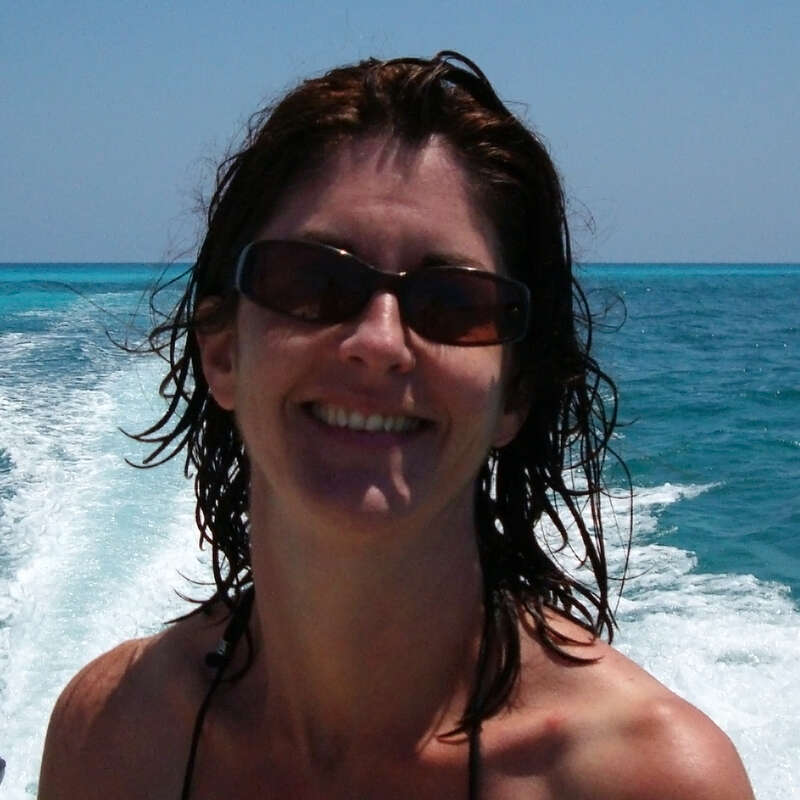About Bomani Tented Lodge
Opened in 2013, Bomani Tented Lodge is one of a number of lodges just outside Zimbabwe’s Hwange National Park.
From its remote location close to the quiet south-eastern corner of the park, the lodge offers exclusive game viewing within its own private concession, as well as easy access to some of the best game-viewing areas in the park itself.
Although no one from Expert Africa has stayed at Bomani yet, we have impressed on our visits. This is a simple lodge without too many frills but it's clean and comfortable and in a beautiful, unspoilt and remote area.
As well as some classic safari activities, the camp offers more individual experiences such as their photographic hides, along with the opportunity to arrive in the park by rail, or to take part in a ‘pump run’. We would expect the guiding to be of a really high standard.
Our view
Although no one from Expert Africa has stayed at Bomani yet, we have impressed on our visits. This is a simple lodge without too many frills but it's clean and comfortable and in a beautiful, unspoilt and remote area.
As well as some classic safari activities, the camp offers more individual experiences such as their photographic hides, along with the opportunity to arrive in the park by rail, or to take part in a ‘pump run’. We would expect the guiding to be of a really high standard.
Accommodation
11 rooms
Children
Best for 12+
Open
All year
Activities

4WD Safari

Birdwatching

Cultural excursion

Guided walking safari

Horse-riding

Night drive

Private activities
Traveller reviews of Bomani Tented Lodge
8 real, un-edited reviews from Expert Africa's travellers.
Arrived 7 Aug 2021, 4 nights
"Bomani Tented Lodge review"
Overall rating: Excellent
Arrived 17 May 2019, 3 nights
"Bomani Tented Lodge review"
Overall rating: Good
Arrived 24 Apr 2019, 3 nights
"Loved Bomani"
Overall rating: Excellent
Arrived 16 Nov 2018, 3 nights
"Bomani Review"
Overall rating: Good
Arrived 1 Nov 2018, 6 nights
"Great time at Bomani"
Overall rating: Excellent
Arrived 16 Sep 2017, 3 nights
"At home with the wild"
Overall rating: Excellent
Arrived 28 Aug 2016, 3 nights
"My dream of Africa"
Overall rating: Excellent
Arrived 4 Apr 2015, 5 nights
"Magnificent stay"
Overall rating: Excellent
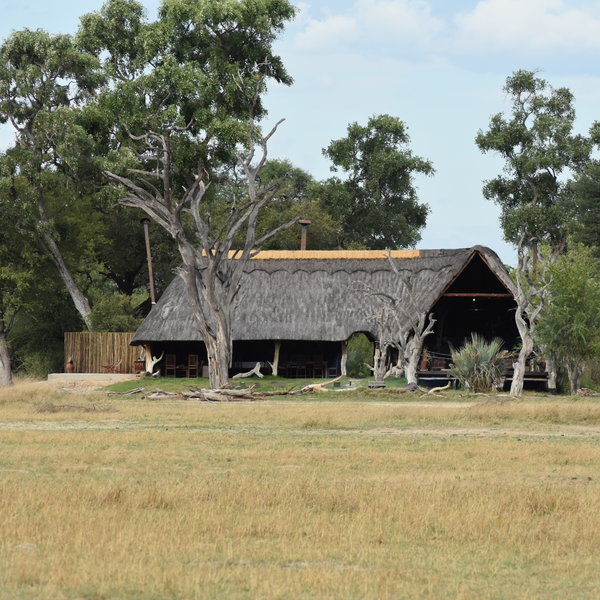
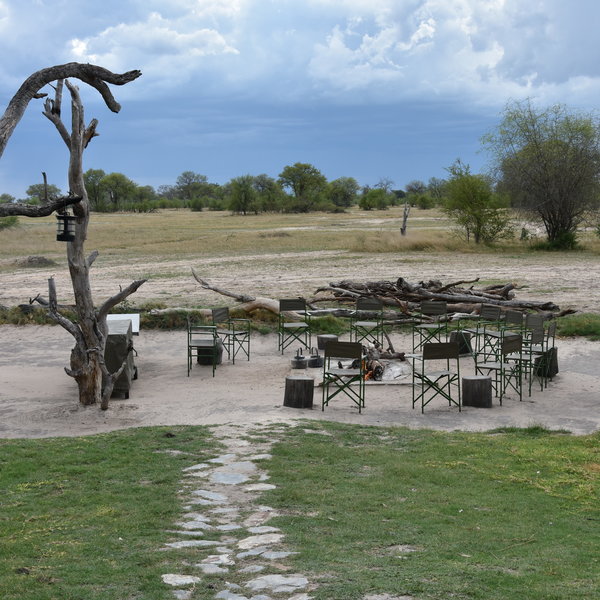
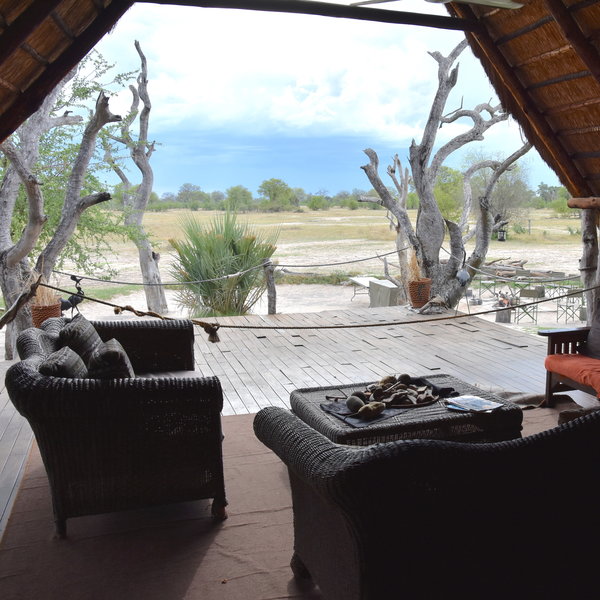
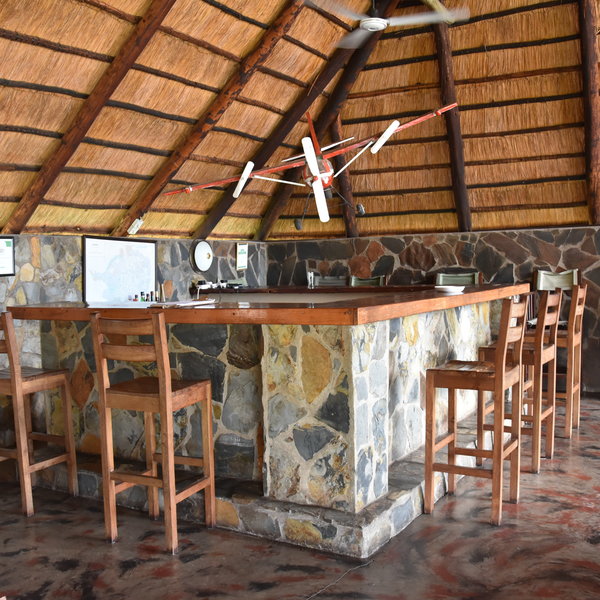
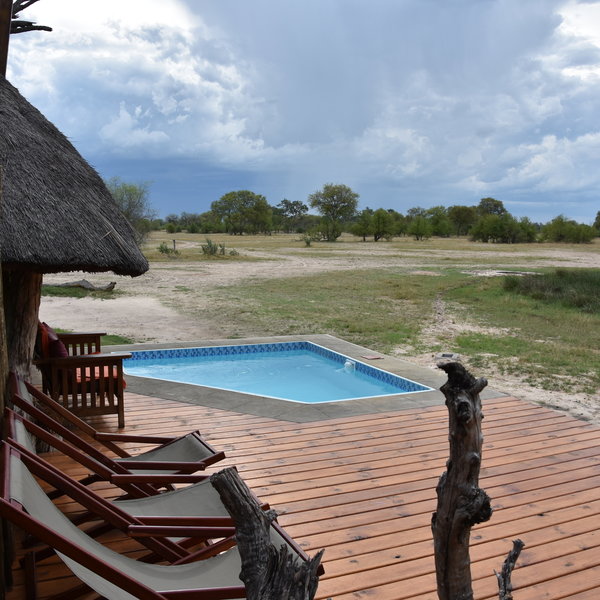
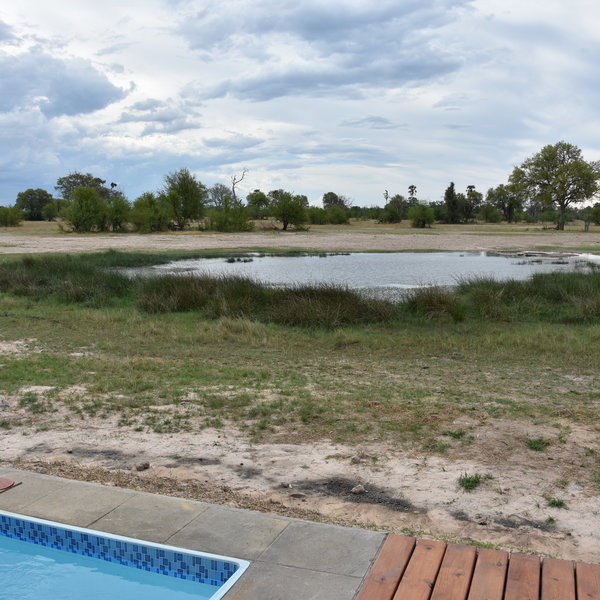
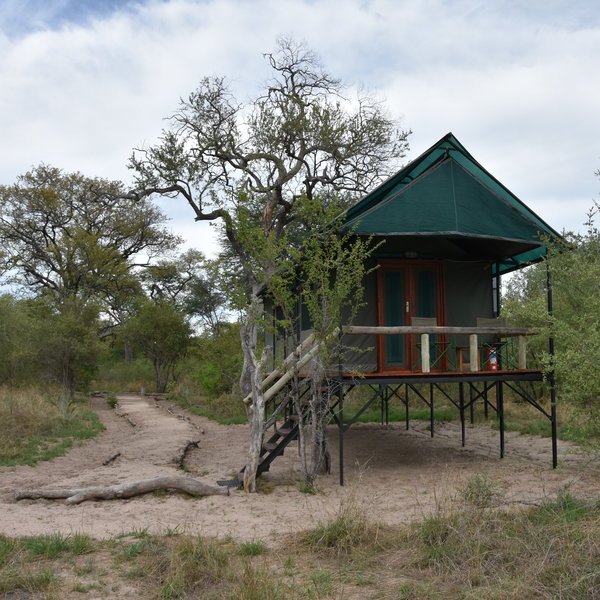
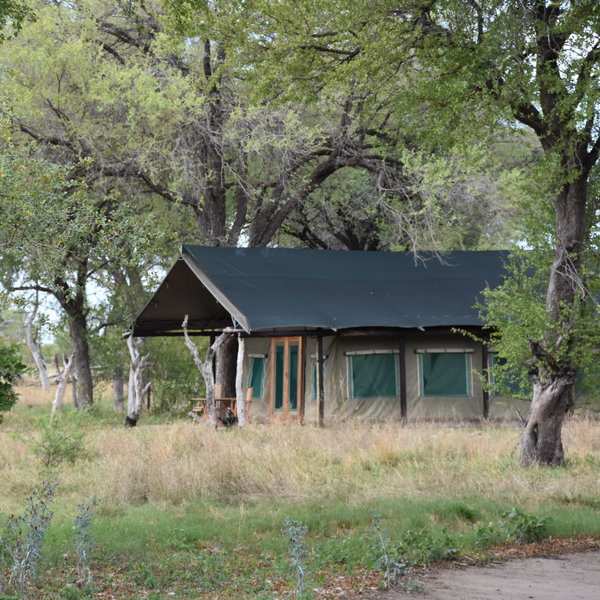
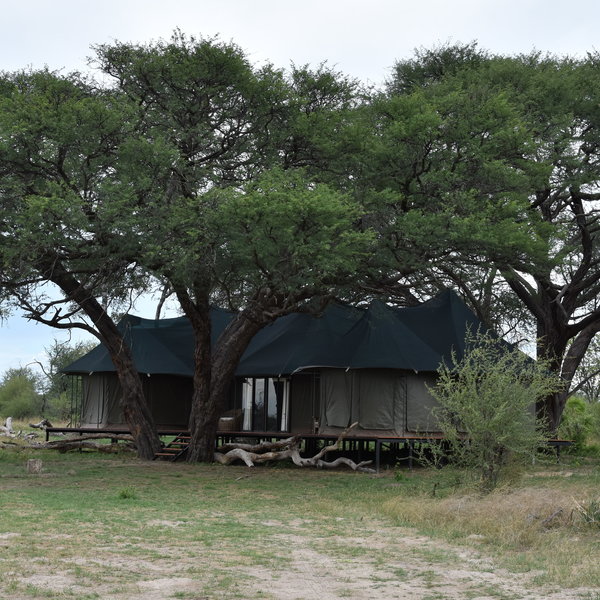
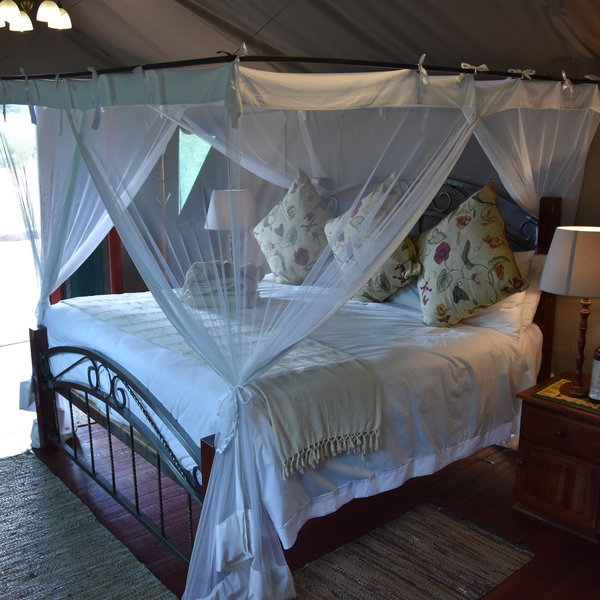
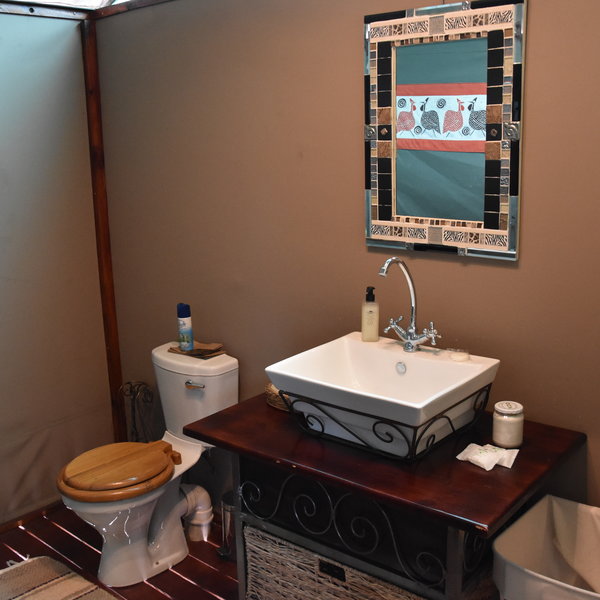
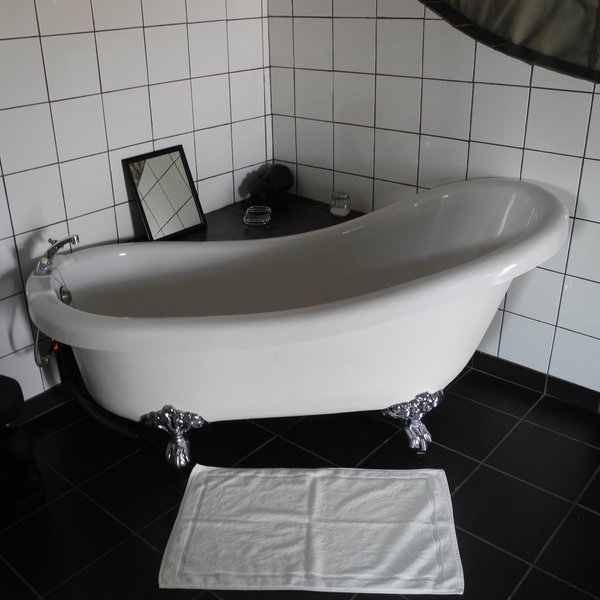
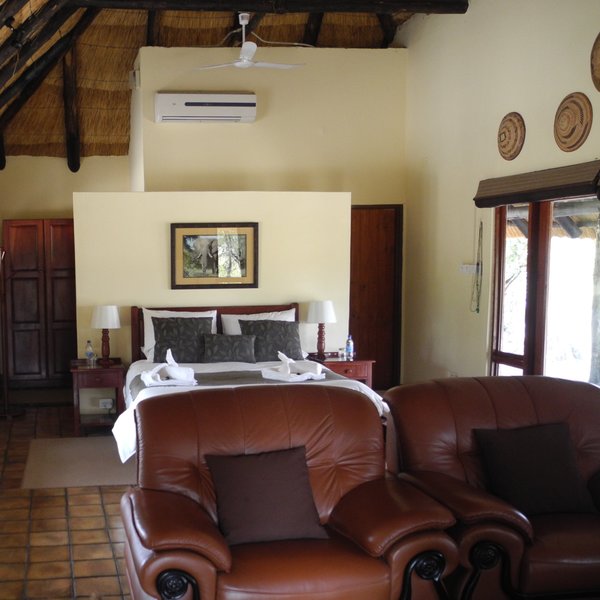
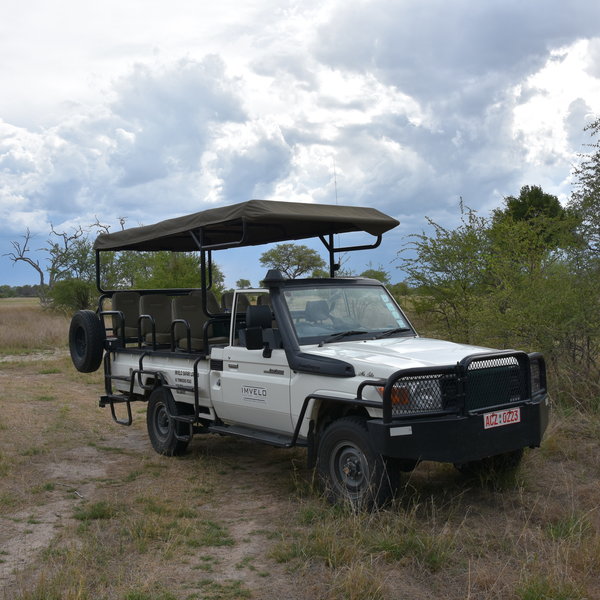
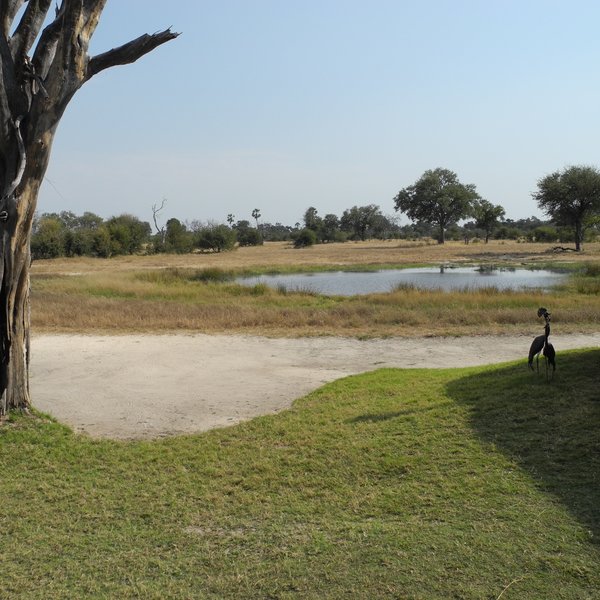
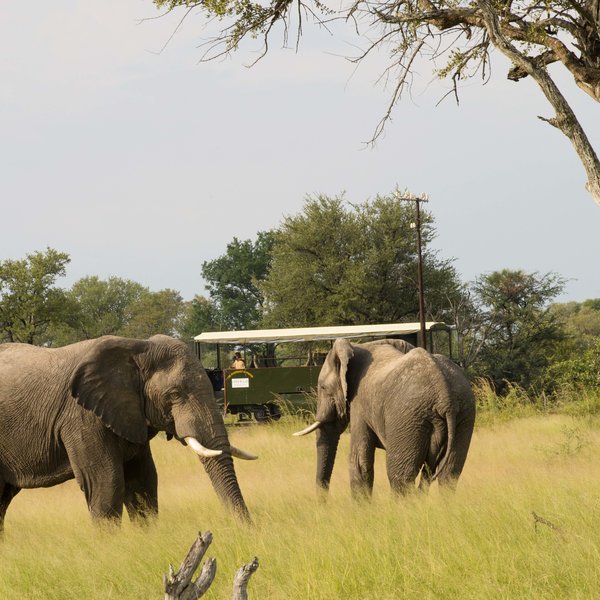
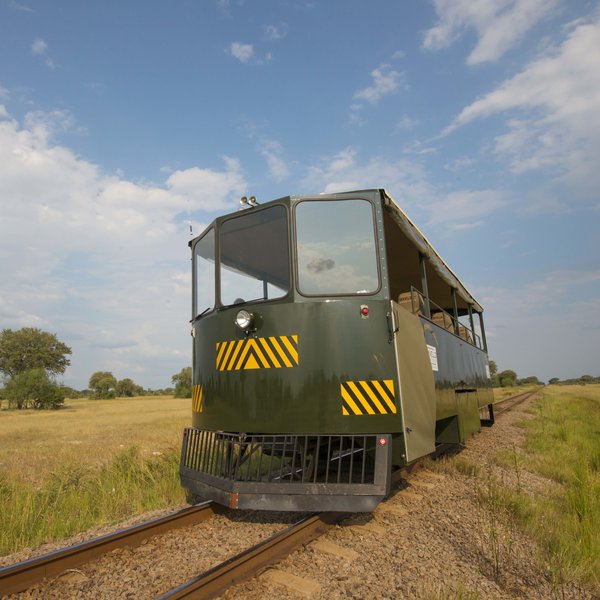
Expert Africa's gallery
When we travel we take lots of photos ourselves to give you a real and un-edited view of the safaris. See our 17 pictures and 1 videos of Bomani Tented Lodge to get the candid view.
View galleryBomani Tented Lodge: Our full report
Opened in 2013, Bomani Tented Lodge is one of a number of lodges just outside Zimbabwe’s Hwange National Park.
From its remote location close to the quiet south-eastern corner of the park, the lodge offers exclusive game viewing within its own private concession, as well as easy access to some of the best game-viewing areas in the park itself.
Although no one from Expert Africa has stayed at Bomani Tented Lodge yet, we have been impressed on our various visits since the lodge opened.
Bomani’s private concession, which it shares with its more upmarket sibling, Camelthorn, lies in the remote Sikumbi Forest Reserve, with direct and easy access into Hwange National Park through a purpose-built gate. This end of the park is generally quieter and less visited than further north, while still having fantastic wildlife areas such as the Ngamo Plains, which are particularly well-known for their elephant populations.
A novel feature at Bomani is The Elephant Express, a modified rail carriage that has been renovated to a very high standard. It runs along the tracks originally constructed by Cecil Rhodes, which form the eastern boundary of the park. Not only is this a novel way to arrive on safari, but is also a more comfortable journey than by vehicle, with room to move around, and a chance for a drink as you try and spot some of the park’s wildlife during your transfer. The Elephant Express also connects perfectly with the Stimela Star: an overnight rail service between Victoria Falls and Dete.
Bomani itself is built along the edge of a small pan, with a pumped waterhole that attracts game from the surrounding area. The lodge has a distinctly rustic, “bushcamp” feel, with fewer frills than at Camelthorn, located just a few kilometres away.
Visitors to Bomani have the choice of four different accommodation options: five tented chalets, four tented suites, a larger family chalet, and a brick-built house sleeping up to four.
- The five Saddlebill tents are the simplest option at Bomani. Raised on wooden platforms with balconies overlooking the pan, these large tents have big mesh windows allowing light in and air to circulate, aided by a standing fan. For cooler evenings the windows can be “closed” with canvas flaps. The tents have either twin or double bedrooms with mosquito nets, and en-suite bathrooms with a shower, flush toilet and basin. These tents are simple and functional rather than luxurious whilst remaining comfortable.
One particularly nice touch: the area immediately around each chalet has been cleared of grass and vegetation,leaving just bare sand. Each afternoon, the sand is brushed clear, making for fascinating “reading” the following morning as you try to identify what's been passing by (and underneath) your tent in the night. Of course, you can always ask a guide or member of staff to help identify any of the trickier spoor. - The four Spurwing suites are larger, more luxurious tents, built at ground level. These, too, overlook the pan but they have the added benefit of a good view over the waterhole from their verandas. The suites, like the Saddlebill tents, are configured as twin or double rooms, and each has a small lounge area with comfortable chairs and a sofa around a coffee table and a small writing desk.
In most of the spurwing suites, the en-suite bathrooms are in a separate room at the back of the tent. Although a little larger than those in the saddlebill tents, they come with the same features. In the honeymoon suite, however, the bathroom has a more open-plan feel and has with a free-standing bath as well as the shower. - At the far end of the lodge is the Sable suite, a large tented structure that is again built on a raised platform. Perfect for families or couples travelling together, it acts as a self-contained unit with two separate en-suite bedrooms, its own dining area and lounge, and the fun addition of an outdoor shower. For families of up to six, there is the option of adding additional beds to the lounge.
- Unlike the other rooms at Bomani, the thatched chalet is built from brick rather than canvas. With two separate bedrooms sharing a bathroom, it is primarily designed for families but could work for a couple who would prefer a more solid structure with air conditioning. The master bedroom has a similar layout to those in the spurwing suites, with the addition of a satellite TV.
On a sandy area to the front, the lodge's firepit forms a focal point for early evening drinks and snacks.
Although we haven't yet spent long enough at Bomani to get a sense of the quality of the guiding, we have been very impressed by the activities at Camelthorn, and would expect the guiding team at Bomani to be of the same very high calibre.
Activities at Bomani Tented Lodge focus on both walks and drives, although its location just outside the park means that walks usually start with a short drive in order to reach some of the more exciting walking areas. Typically, afternoon drives in the park usually finish with a short drive back to camp in the dark with a spotlight, but due to park rules any proper night drives have to be carried out on Bomani’s private concession.
Bomani also has access to a number of game hides. Most excitingly they have a converted shipping crate (complete with its own plumbed-in toilet) sunk into the ground looking out over a popular waterhole. The guides are able to turn on water pumps, which reliably draw in herds of elephant that associate the sound of the pump with fresh water. This allows some really close-up sightings of elephants, from a unique, low angle – a real plus for keen photographers.
As with its sister camp, Bomani offers guests the chance to take part in a 'pump-run'. Eight pumps in this region of Hwange are maintained and operated by the two lodges, and as a guest you can spend a full day travelling by vehicle from pump to pump, game viewing with your guide along the way and taking in a visit to a local school and village. This is a great opportunity not only to get into more remote areas of the national park, but also to contribute in a tangible way to the upkeep of the national park's vital waterholes.
In addition to the conservation of Hwange's wildlife, Bomani is a keen supporter of the local community, and its parent company is working hard to develop and deliver on social and conservation commitments. They support half-a-dozen schools in the local area as well as once a year running a mobile dental clinic. The lodge has also drilled and installed over 25 new wells for local villages, thereby providing clean water and making the lives of hundreds of local people safer and easier. Bomani is rightly proud of these commitments and achievements and they are happy to arrange for guests to visit some of beneficiaries of the camp's success during their stay.
Geographics
- Location
- Hwange National Park, Zimbabwe
- Ideal length of stay
- We'd recommend a minimum stay of three nights at Bomani Tented Lodge. Both this and Camelthorn work well in combination with their sister properties in other parts of Hwange, Jozibanini Camp and/or Nehimba Lodge.
- Directions
- Most guests at Bomani Tented Lodge arrive by road, usually from Victoria Falls or Bulawayo, via Halfway House – a small service station on the main road between the two towns where guests meet their guide before continuing on to camp (a drive of a couple hours).
Guests at Bomani may also combine their road transfer over night trip between Victoria Falls and Dete on the Stimela Star with a trip on board The Elephant Express. Note, however, that The Express is not recommended for those with an onward flight connection..
Alternatively, the light-aircraft flight from Victoria Falls to Bomani's own airstrip takes about one hour. - Accessible by
- Fly-and-Transfer
Food & drink
- Usual board basis
- Full Board & Activities
- Food quality
- We have never eaten at Bomani Tented Lodge before but we have stayed at and dined at its sister camp Camelthorn. There is certainly little danger of anyone going hungry during a stay there and we'd be surprised if the ethos at Bomani wasn't exactly the same!
We understand that the day begins with an early breakfast around the campfire: a simple but varied spread of toast, yoghurt, cereal and fruit, accompanied by tea, coffee and fruit juice.
On return to camp brunch is served. On a previous visit from Camelthorn in May 2016 this consisted of a cooked English breakfast (with eggs and omelettes prepared to order), along with spaghetti bolognese, and a range of salads.
High tea, before your afternoon activity, could include banana banoffie tarts and tea and coffee. Then drinks during the afternoon game drive are accompanied by savouries such as meaty tarts topped with caramelised onion and assorted bruschetta.
Dinner is usually three courses. A typical menu might start with honey and sesame-seed chicken topped with chilli flakes and a salad garnish, followed by pork medallions or bream fillets topped with pickled cucumber salad, both served on fried potato rosti with warm pickled carrot salad and garlic and herb sauce. For dessert you could expect something like a pear and passion fruit pudding served with toffee sauce topped with dipped short bread biscuit and spun sugar. - Dining style
- Group Meals
- Dining locations
- Indoor and Outdoor Dining
- Further dining info, including room service
- Room service is not available.
- Drinks included
- Bottled water, soft drinks, local beers and spirits, and a selection of South African red and white wines are included. Champagne and imported wines and spirits will cost extra and may need to be requested in advance.
The water is fine to drink from the taps, but bottled water is also readily available
Special interests
- Family holidays
- Just outside Hwange, Bomani Tented Lodge offers family-friendly rooms and the unique Elephant Express rail experience – a fun adventure for all. With exciting wildlife and a welcoming atmosphere, it’s ideal for a family safari in Zimbabwe.
- See ideas for Family holidays in Zimbabwe
- Photography holidays
- Set in the Sikumbi Forest Reserve, Bomani Tented Lodge offers exclusive access to Hwange via a private gate. With views over a waterhole and access to superb photographic hides, it’s an ideal base for capturing Zimbabwe’s incredible wildlife moments.
- See ideas for Photography holidays in Zimbabwe
- Riding holidays
- The open grasslands of Hawange's Ngamo Plain are the perfect environment for horse riding. Bomani Tented Lodge is one of the few properties in Zimbabwe to offer riding with guides and horses catering for all experience levels.
- See ideas for Riding holidays in Zimbabwe
- Cultural Experiences
- With genuinely strong links to the local community, Bomani Tented Lodge offers a real chance for travellers to visit and interact with the community – to meet the local people and understand more about the culture in this rural area of Zimbabwe.
- See ideas for Cultural Experiences in Zimbabwe
Children
- Attitude towards children
- Children aged seven plus are welcome at Bomani, although there are no special provisions for children.
- Property’s age restrictions
- Bomani Tented Lodge accepts children of seven years and older.
- Special activities & services
- There are no special activities and services for children.
- Equipment
- The sable suite affords families some separation from other guests, and there is also the option of the brick-built chalet, complete with air conditioning, a television and a DVD player.
- Generally recommended for children
- There is quite a mature feel to Bomani Tented Lodge, and the lack of a swimming pool or any other amenities that would appeal to children may mean that this isn't the best camp for a family safari. We would recommend it for older children and teenagers rather than anyone still in single figures.
- Notes
- Bomani Tented Lodge is an open camp with dangerous animals frequently roaming through. Children should be supervised at all times.
Our travellers’ wildlife sightings from Bomani Tented Lodge
Since mid-2018, many of our travellers who stayed at Bomani Tented Lodge have kindly recorded their wildlife sightings and shared them with us. The results are below. Click an animal to see more, and here to see more on our methodology.

100% success

100% success

100% success

100% success

100% success

100% success

100% success

60% success

40% success

40% success

25% success

20% success

20% success

0% success

0% success

0% success

0% success

0% success

0% success
Communications
- Power supply notes
- Bomani Tented Lodge's generator runs during peak times supported by a solar/battery system when the generator is off.
- Communications
- There is no cellphone reception at Bomani.
- TV & radio
- There is a TV in the thatched chalet but there are no public televisions or radios at Bomani.
- Water supply
- Borehole
- Water supply notes
- Each chalet and suite at Bomani has an ample supply of water. The showers are plumbed and there are flushing toilets.
Health & safety
- Malarial protection recommended
- Yes
- Medical care
- The guides at Bomani are all first-aid trained and there is a doctor in Hwange Town. Medical Air Rescue Service (MARS) is available in the event of an emergency.
- Dangerous animals
- High Risk
- Security measures
- There is an electronic safe in each villa to store valuables. Guides and camp managers sleep on site incase of an emergency.
- Fire safety
- There are fire extinguishers placed around Bomani.
Activities
4WD Safari
Birdwatching
Cultural excursion
Guided walking safari
Horse-riding
Night drive
Private activities
Extras
- Disabled access
- Not Possible
- Laundry facilities
- A full laundry service is included, except for underwear, for which washing powder is provided in the bathrooms.
- Money
- No exchange facilities are offered. Each chalet or suite has an electronic safe for valuables.
- Accepted payment on location
- Cash payments may be made in South African rand, US dollars, pounds sterling, euros and Botswana pula. There are no card facilities at Bomani.
Plan and book your trip with Expert Africa
All of our trips are tailor-made, so we'll always adapt them to suit you. Talk to an Expert and let us plan and arrange your perfect trip.

Talk to an Expert
Call or email us now! We’ll match you with the Specialist in our team who is best suited to help you. Then together we can start planning your trip.

Set up your itinerary
Based on our experience and your ideas, your specialist will create a detailed, costed itinerary. We’ll refine it together, until we have a trip that you’re perfectly happy with.

Prepare for your trip
The same Specialist will make the seamless arrangements for your trip, send you detailed travel documents, and be available to answer any questions before you depart.

Travel with peace of mind
After you set off, you’ll be cared for by our partners in Africa, most of whom have worked with Expert Africa for decades. And if you ever need us urgently, we’re available 24/7.

When you return
We love to learn about your trip, and so will always be grateful if you’ve the time to give feedback to your Specialist when you return.
Bomani Tented Lodge's location
Look closer at the environment and surroundings of Bomani Tented Lodge.
Other lodges in Hwange National Park
Alternative places to stay in this same area.
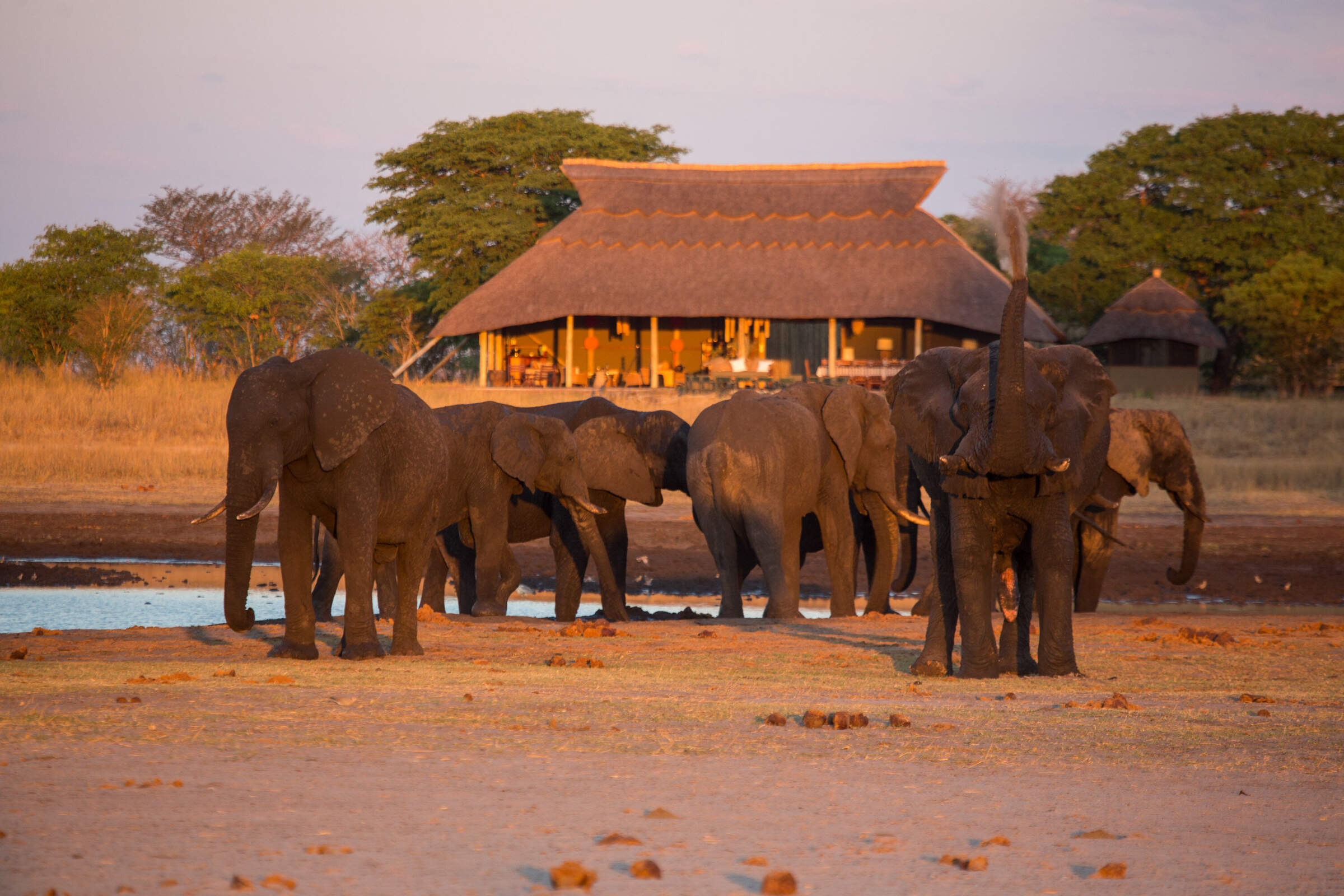
Camp Hwange
Overlooking a waterhole in a remote part of Hwange National Park, Camp Hwange offers great guiding in a pristine wilderness at reasonable prices.
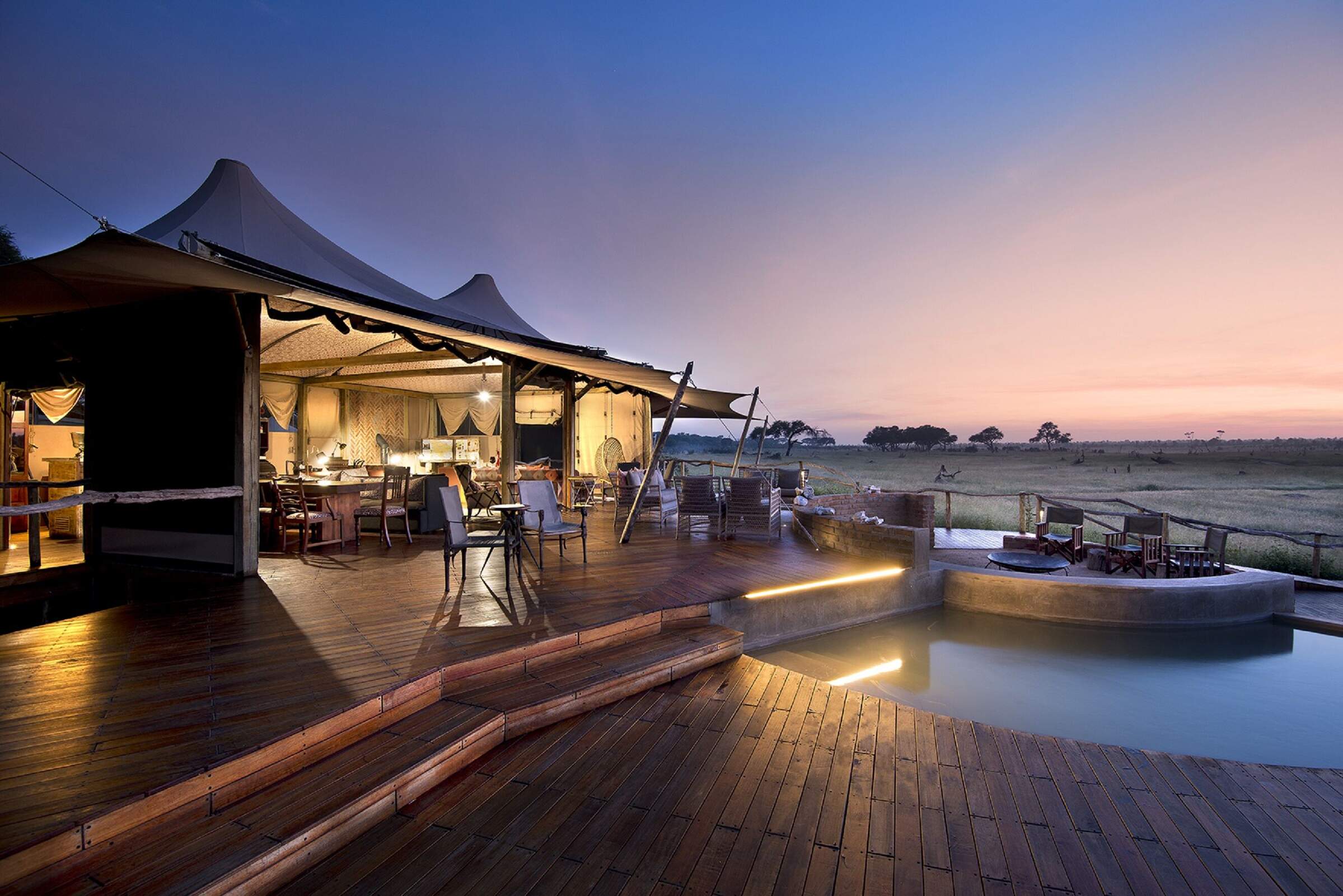
Somalisa Camp
Somalisa is a luxurious, yet remote, safari camp in Hwange National Park, offering walking safaris and game drives.
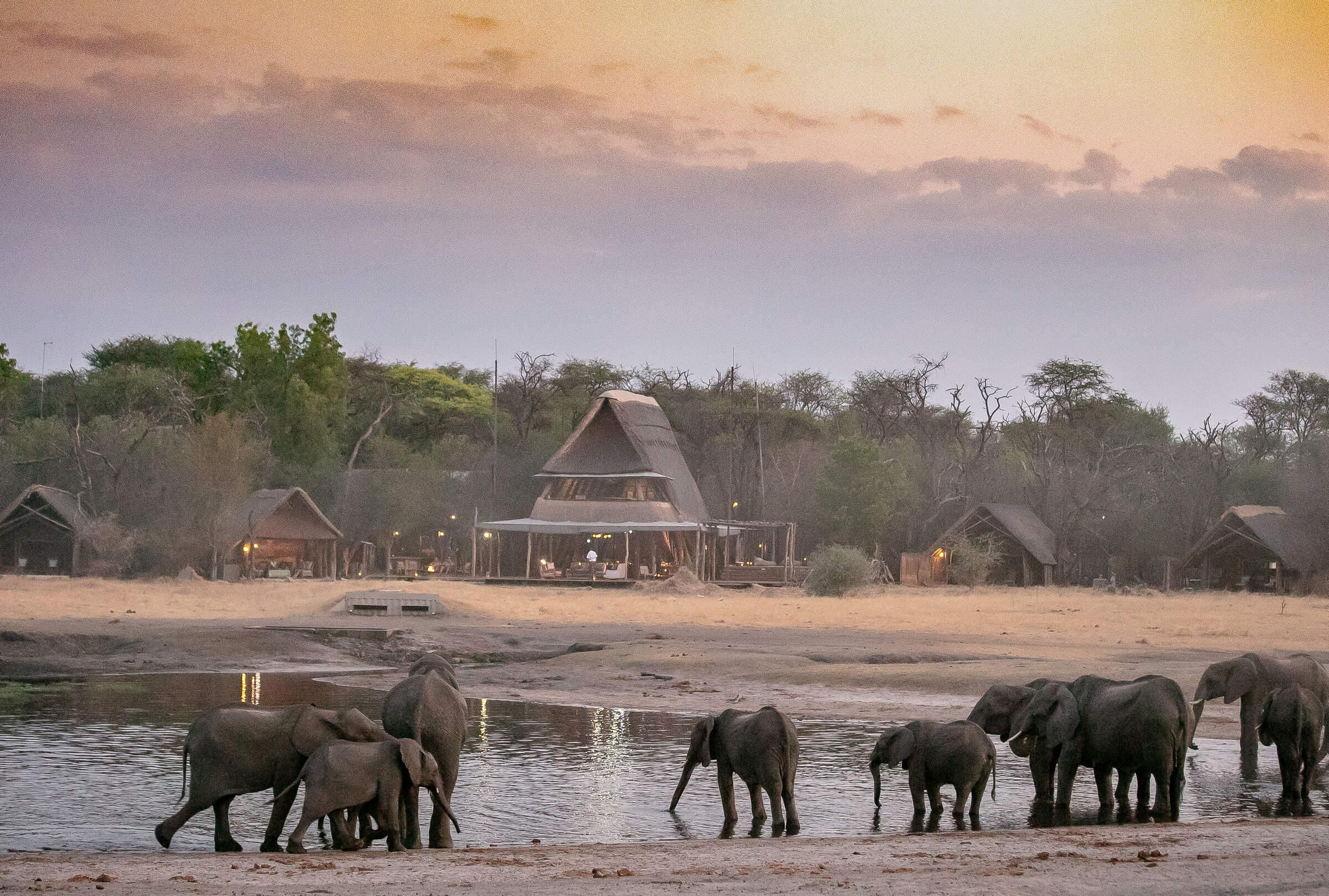
The Hide
Located in a small, private concession, The Hide is a relaxed and comfortable camp offering submerged hides and great family accommodation.
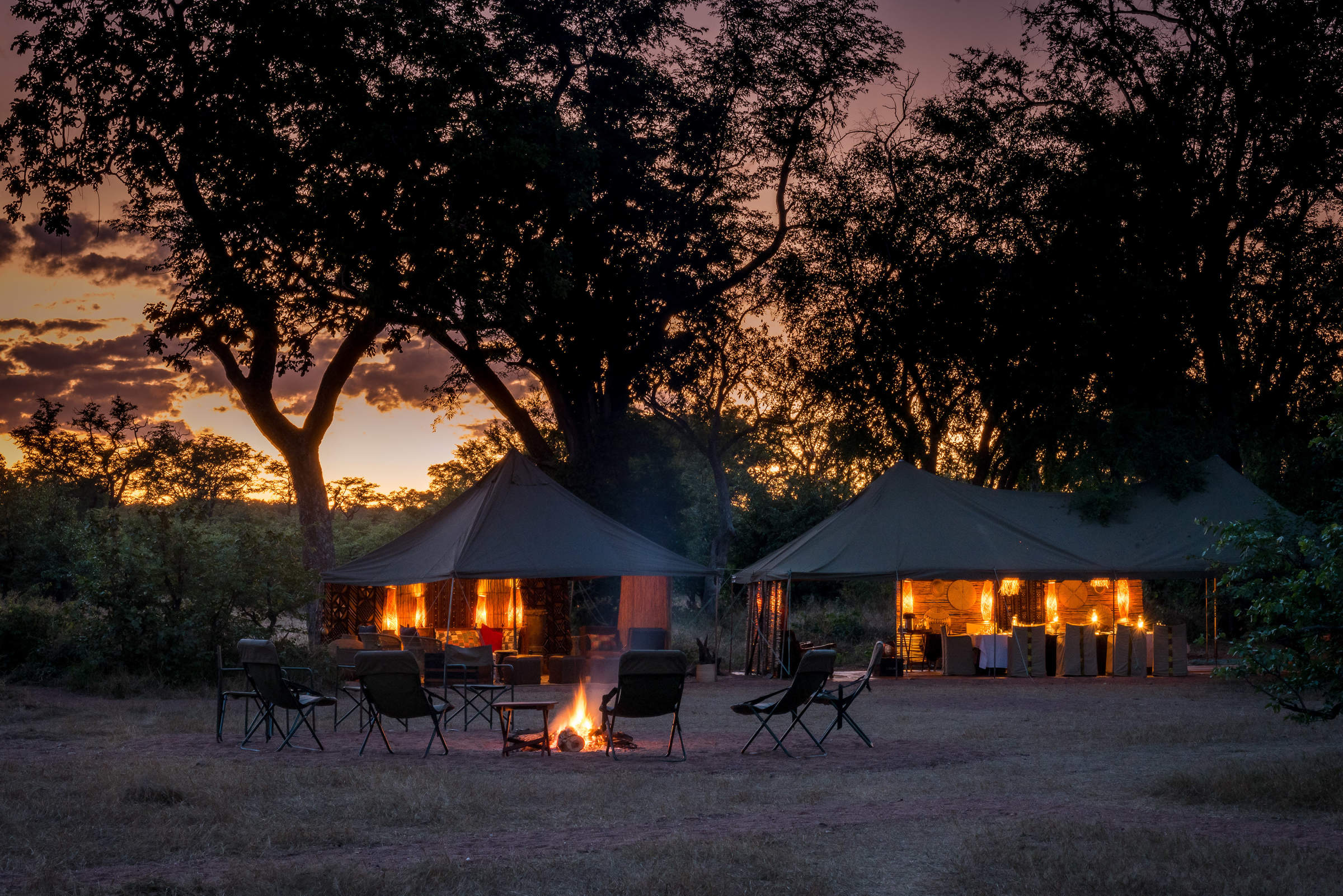
Hwange Bush Camp
Hwange Bush Camp is a small seasonal camp offering comfortable tents, great food, and superb guiding, and is often used by exclusive groups.
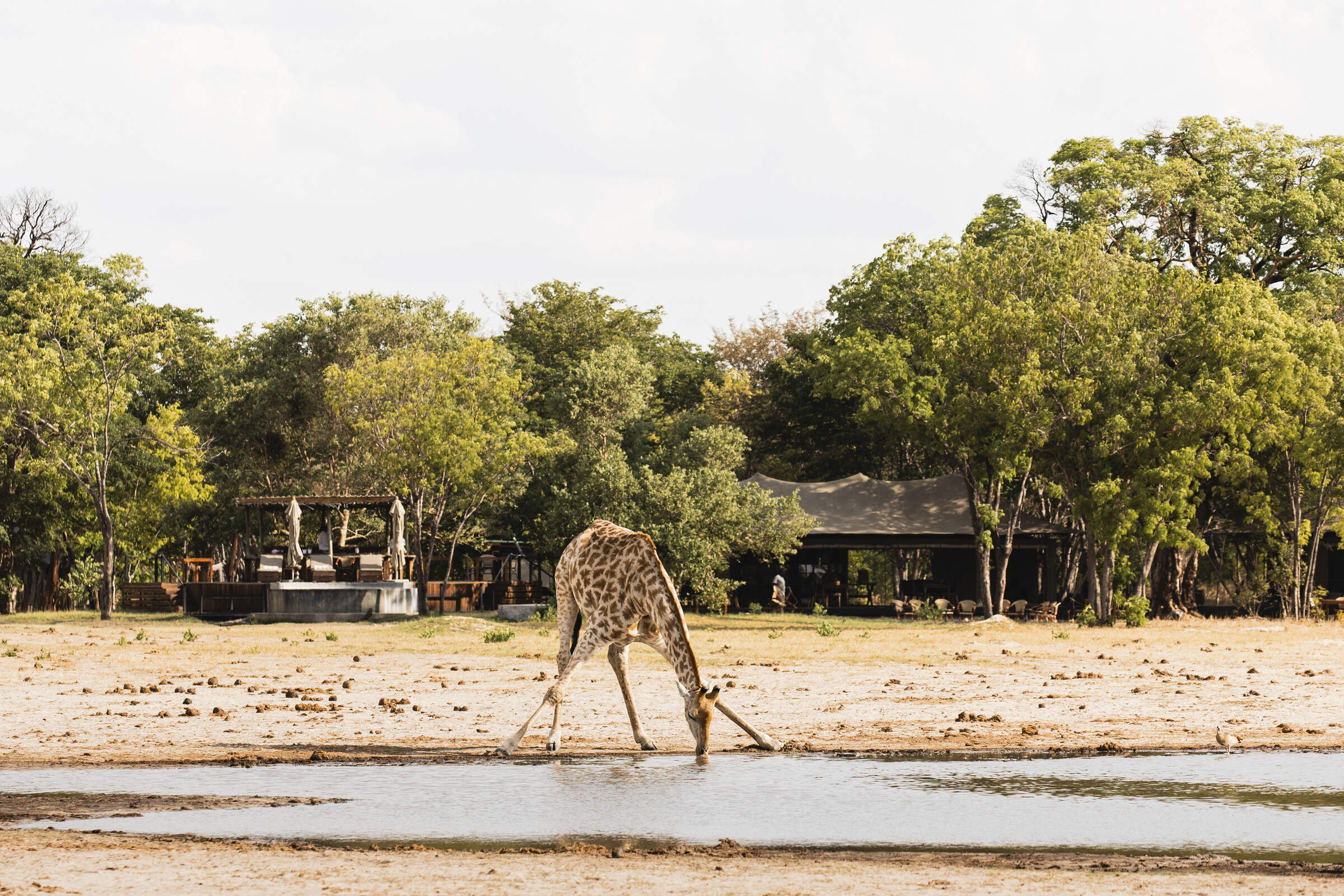
Little Makalolo Camp
Tucked away in Hwange National Park overlooking a waterhole, Little Makalolo Camp combines top guiding with excellent wildlife watching.
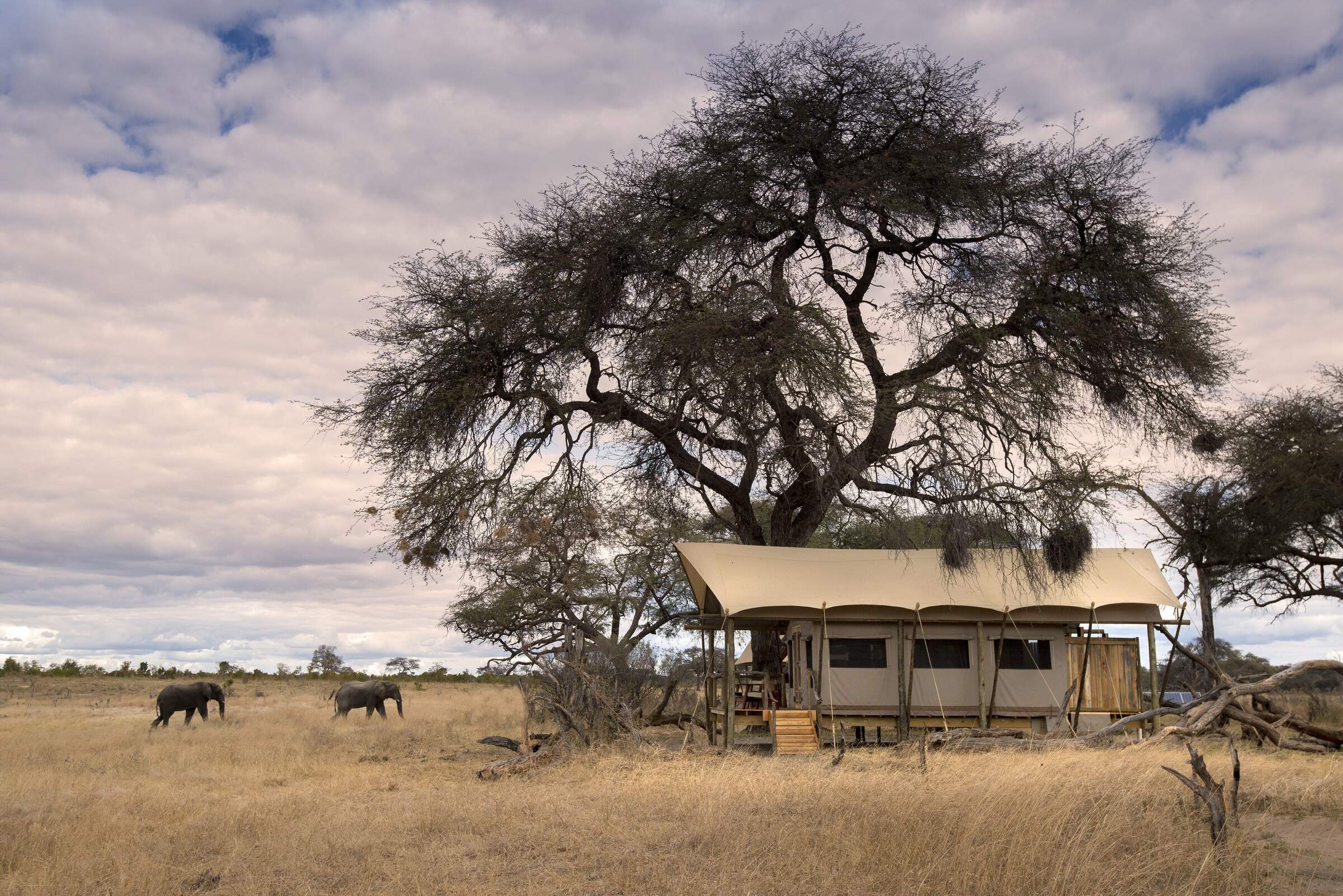
Somalisa Expeditions
A simple but stylish camp, Somalisa Expeditions sits in the heart of Hwange National Park, offering walking safaris and game drives.
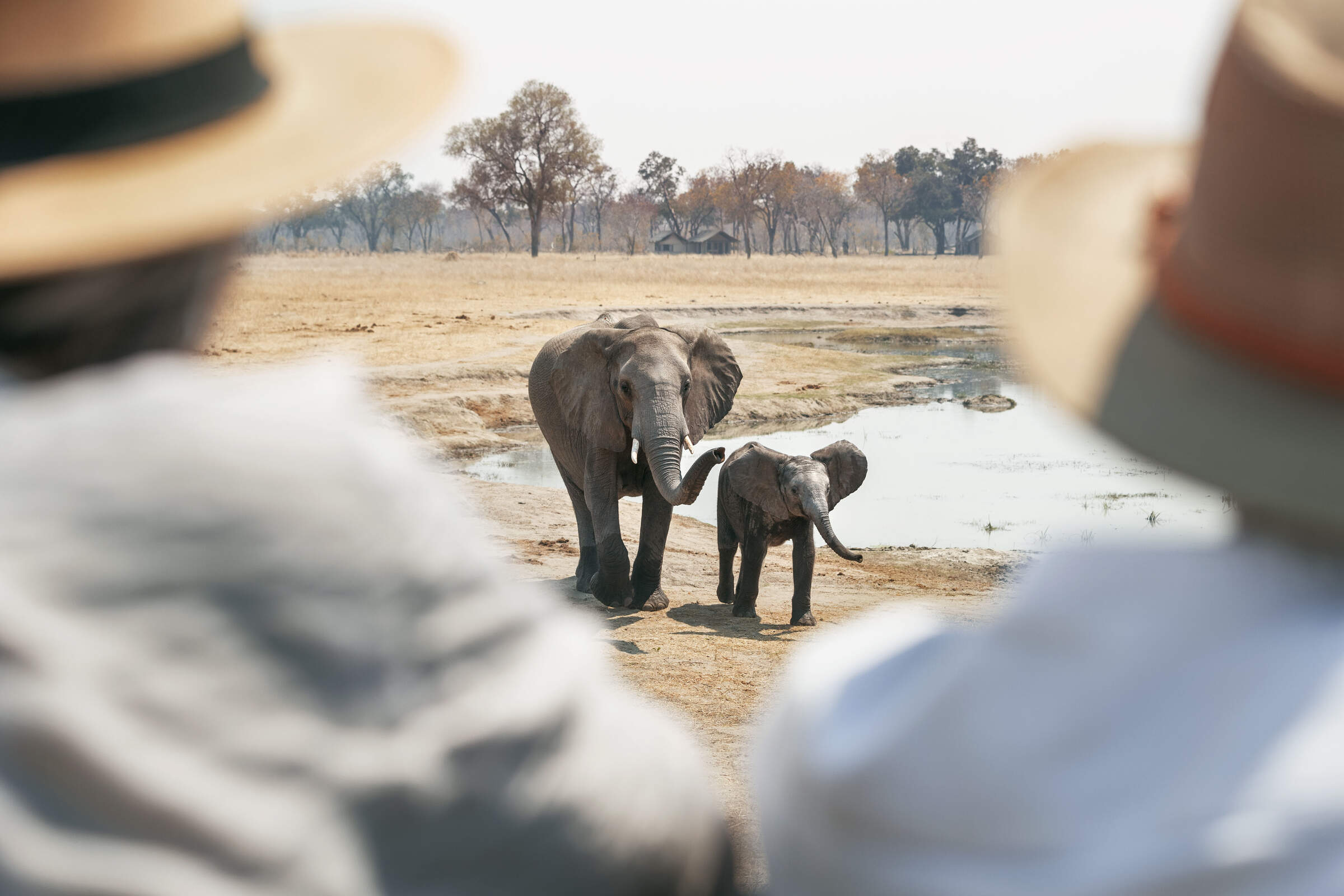
Davison's Camp
Within the Linkwasha Concession, Davison's Camp offers superb value for money, morning walking safaris and spot-lit drives after dark.
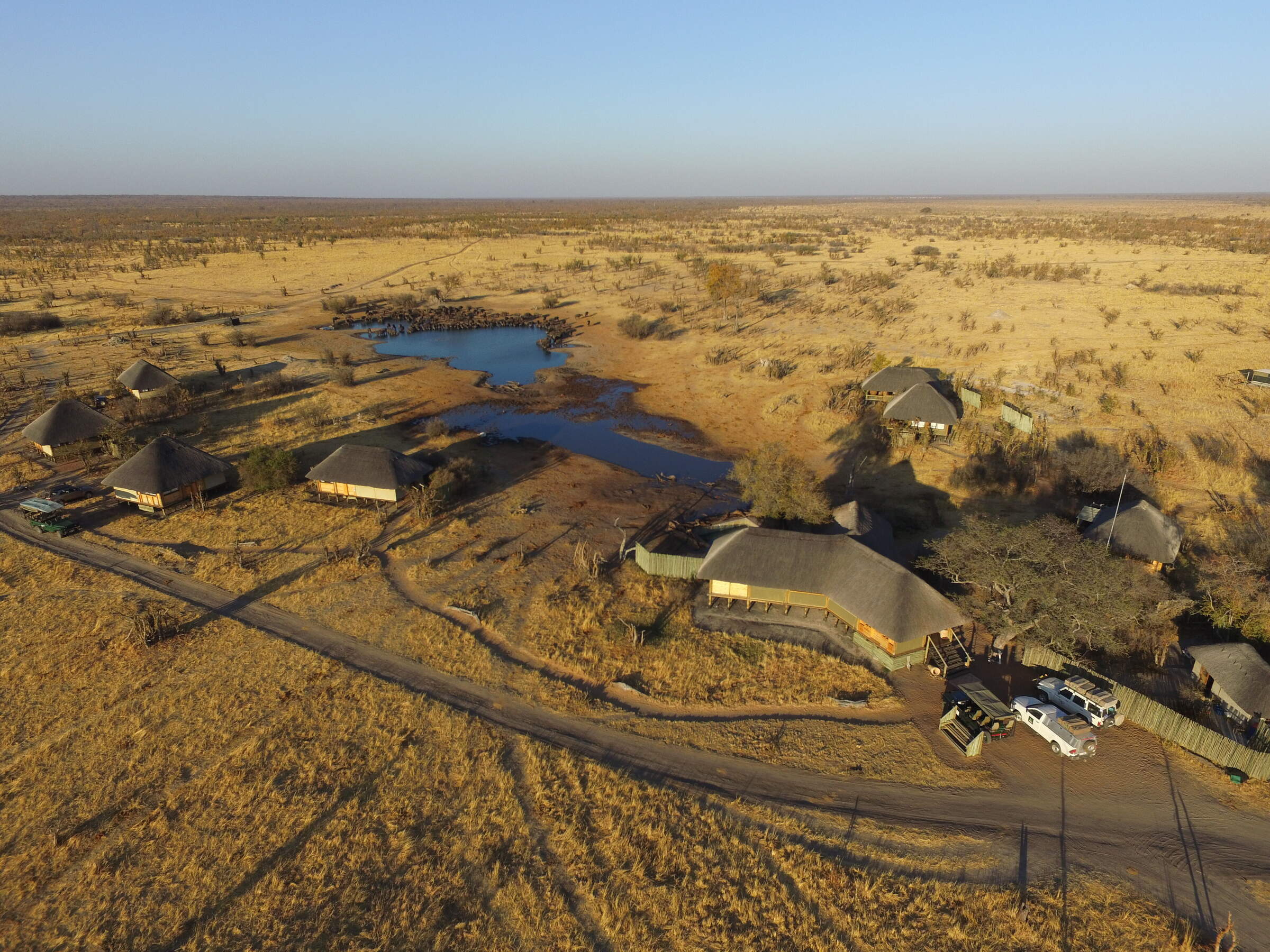
Nehimba Lodge
Nehimba is a comfortable, good-value camp in a remote area of Hwange National Park, teeming with wildlife.
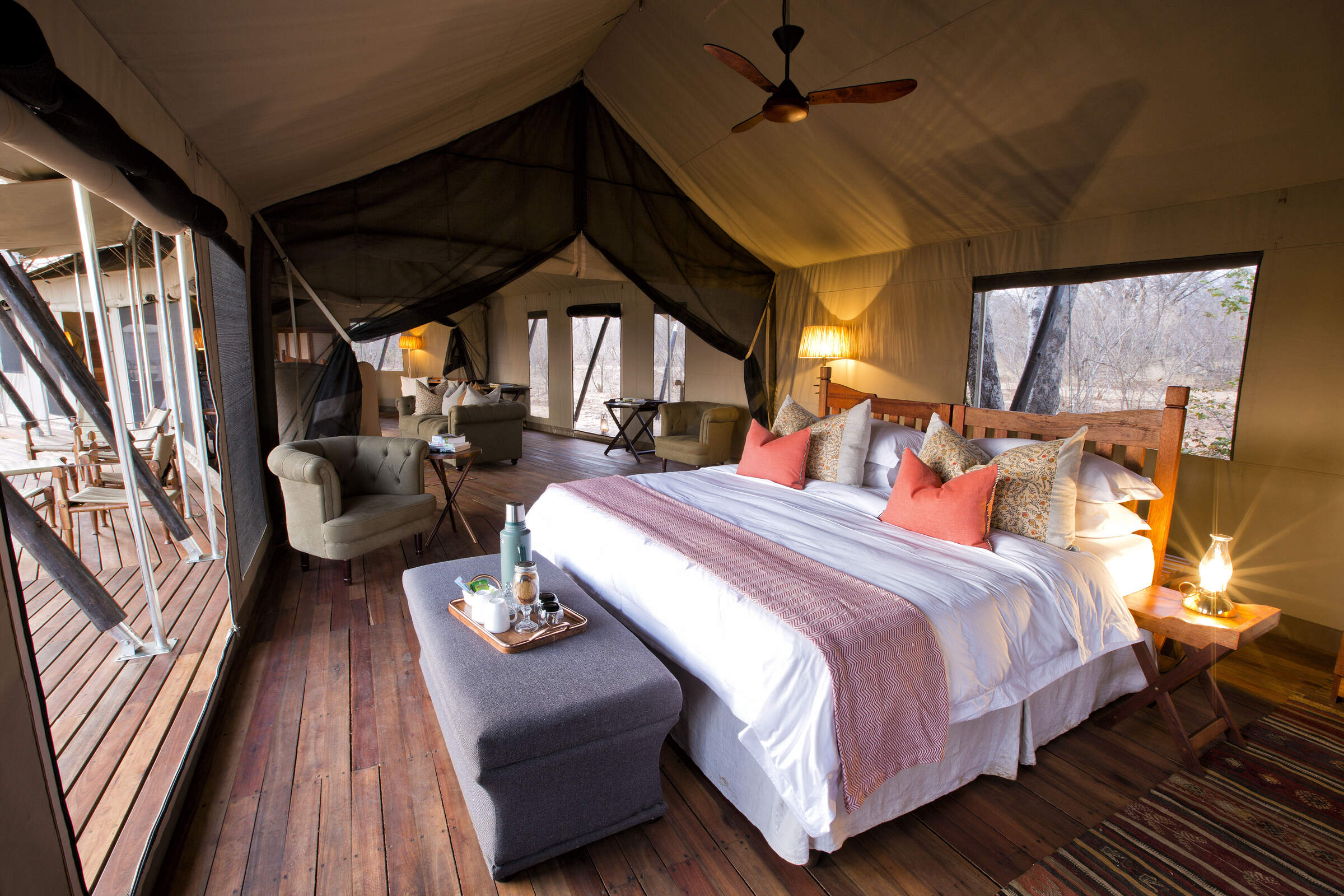
Verney's Camp
Verney's Camp is one of the newest offerings in Hwange, located in the wildlife rich, open landscape in the south-eastern section of the park.
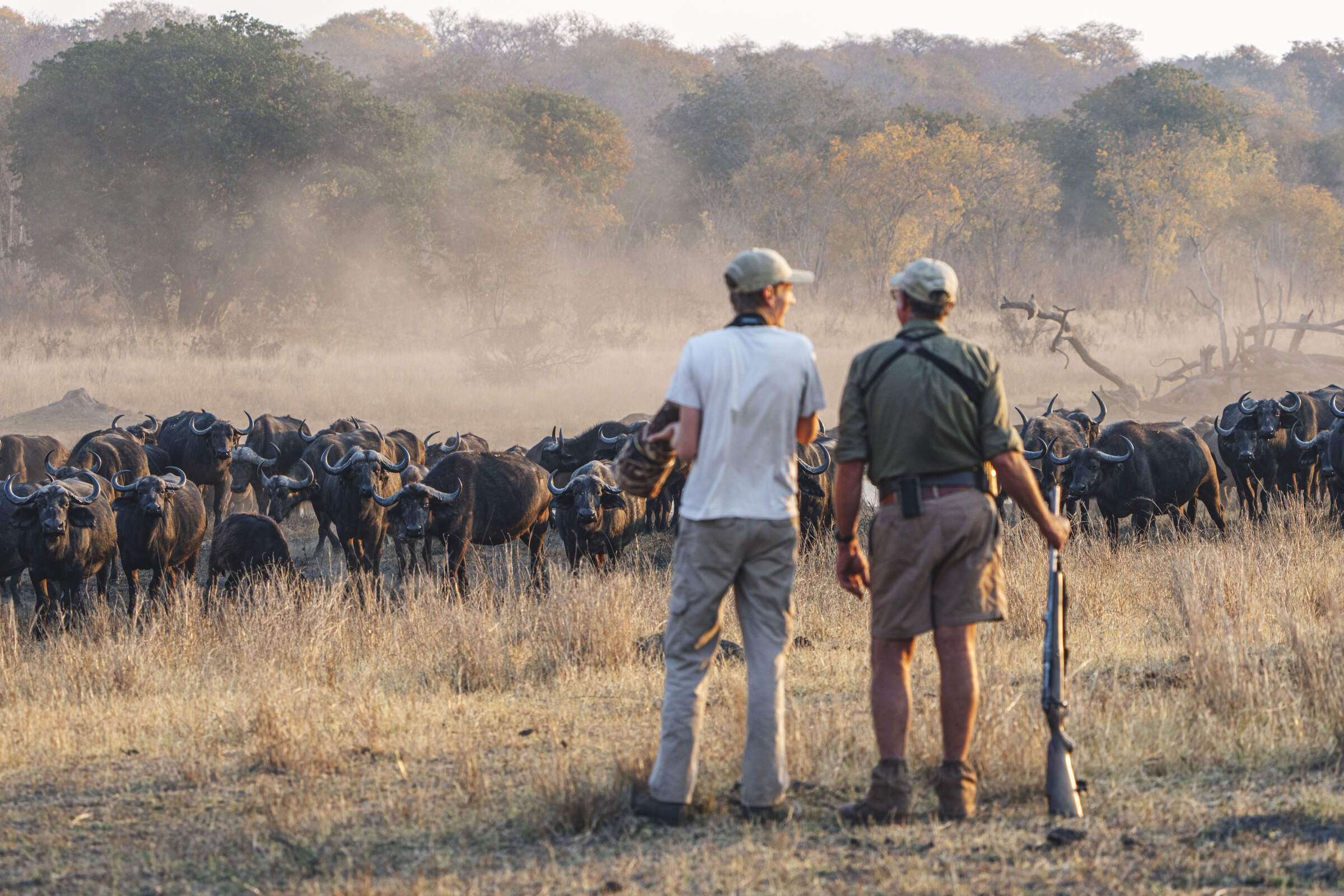
Khulu Bush Camp
Just outside Hwange National Park, Khulu Bush Camp features a waterhole popular with wildlife, especially elephants and offers excellent value for money.
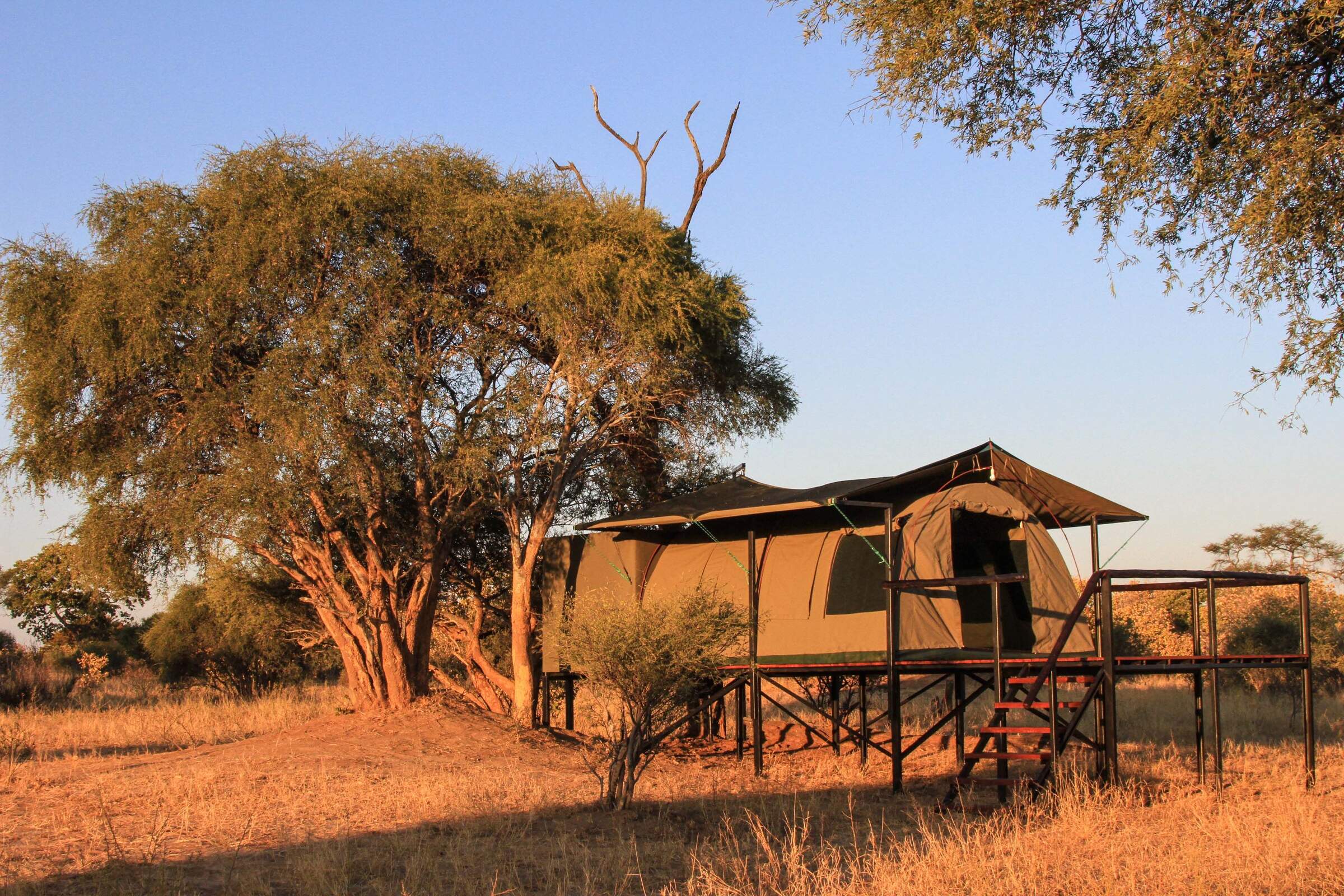
Jozibanini Camp
Remote and rugged, Jozibanini is one of the most remote camps in Zimabwe's largest National Park. Stay here for a real wilderness experience.
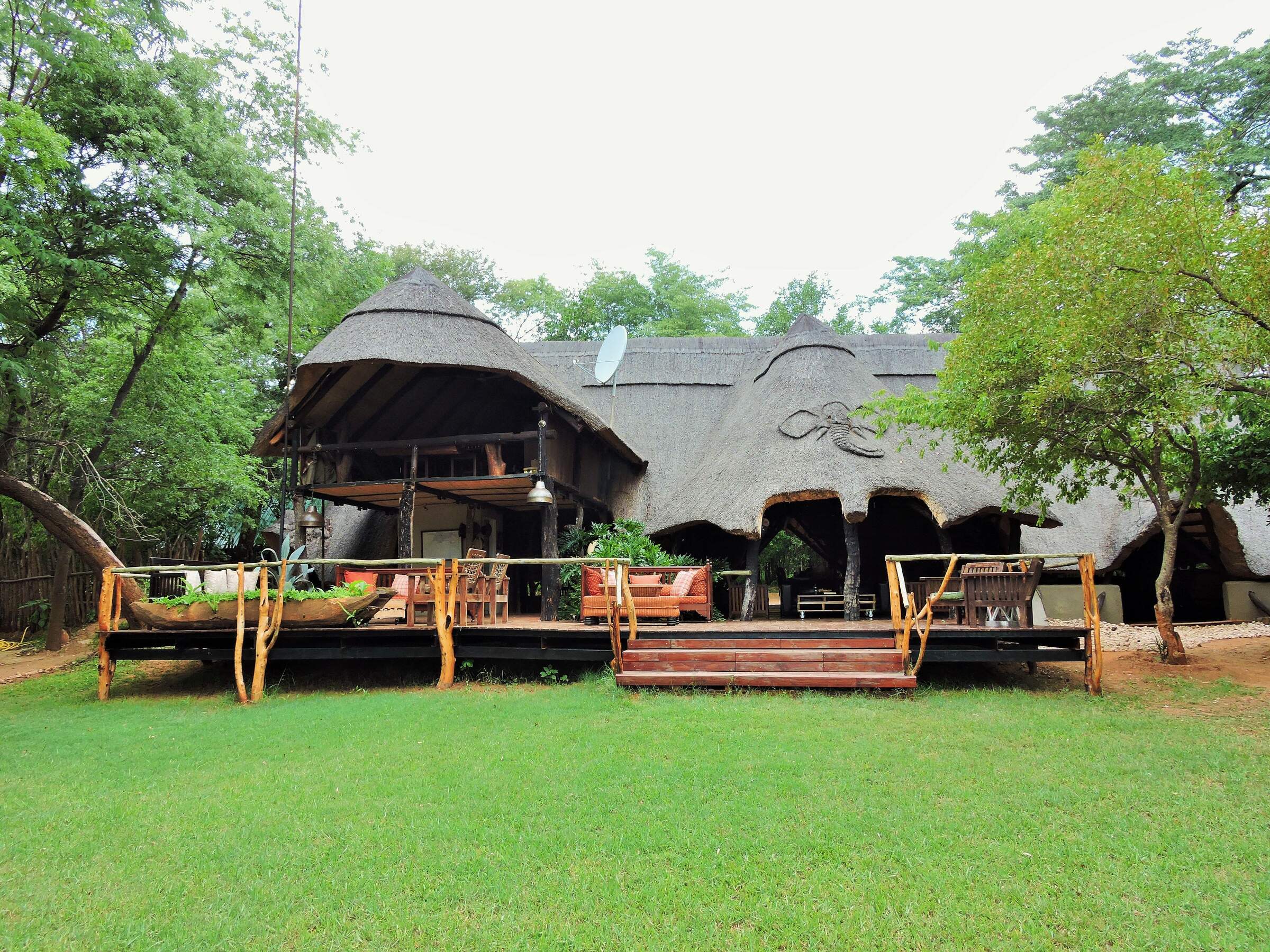
Ivory Lodge
Just outside Hwange National Park, the small Ivory Lodge is a great place to see large herds of elephant as well as smaller plains game.
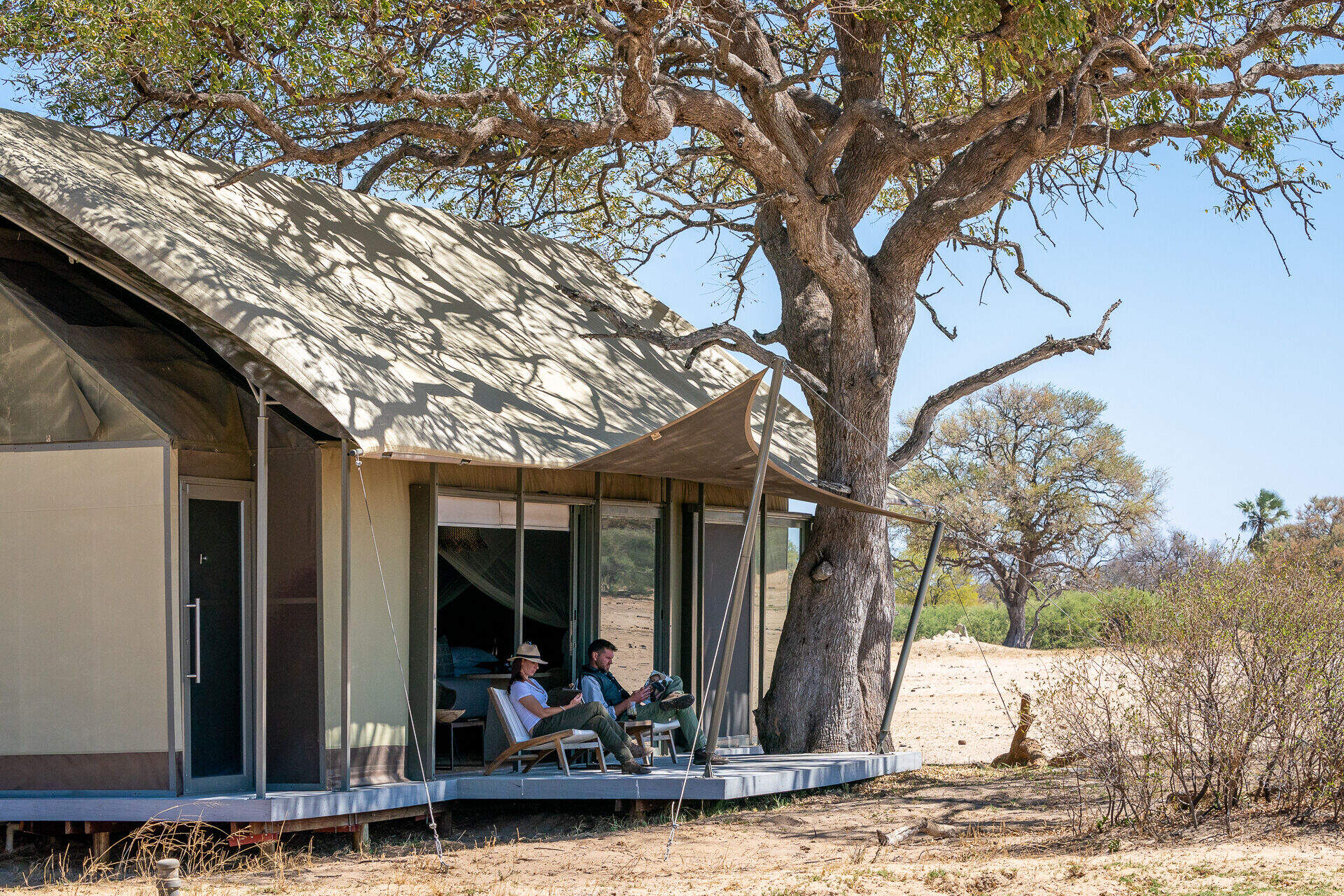
Linkwasha Camp
In its own private concession within Hwange National Park, Linkwasha offers excellent wildlife sightings and luxurious surroundings.
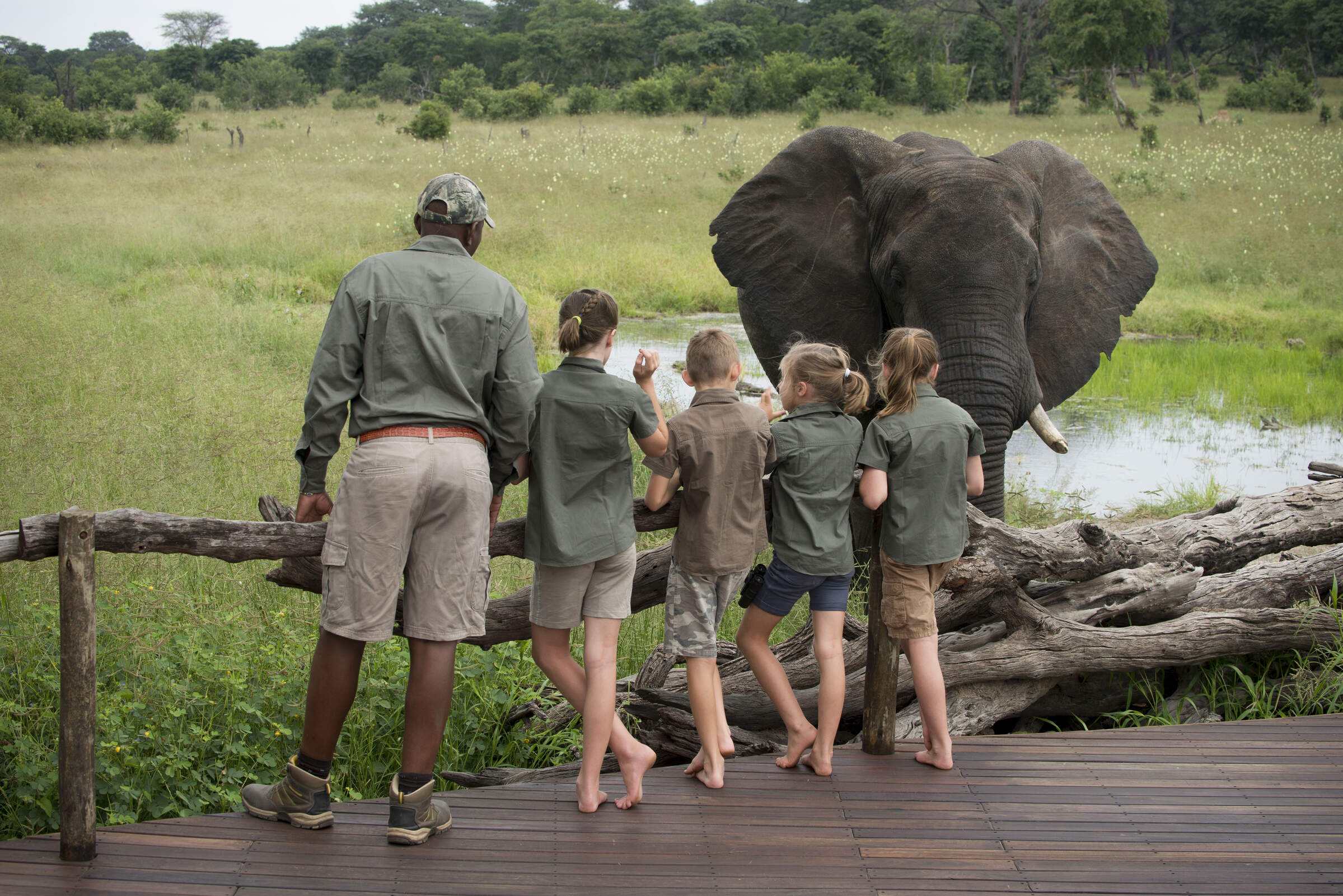
Somalisa Acacia
Somalisa Acacia is a family-friendly, yet remote and luxurious safari camp in Hwange National Park.
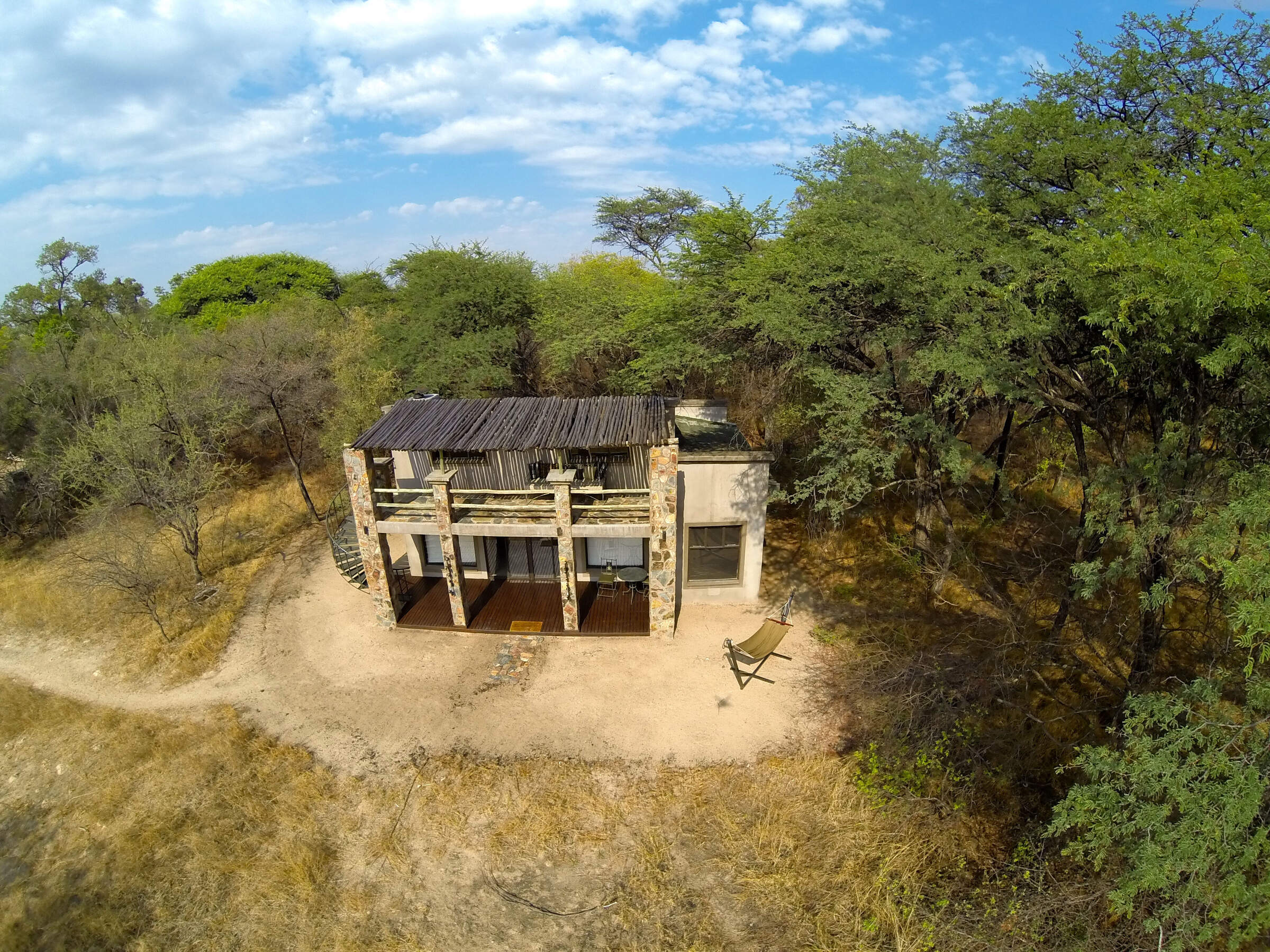
Camelthorn
Camelthorn is a stylish lodge with a range of activities in a remote region of western Zimbabwe, adjacent to Hwange National Park.
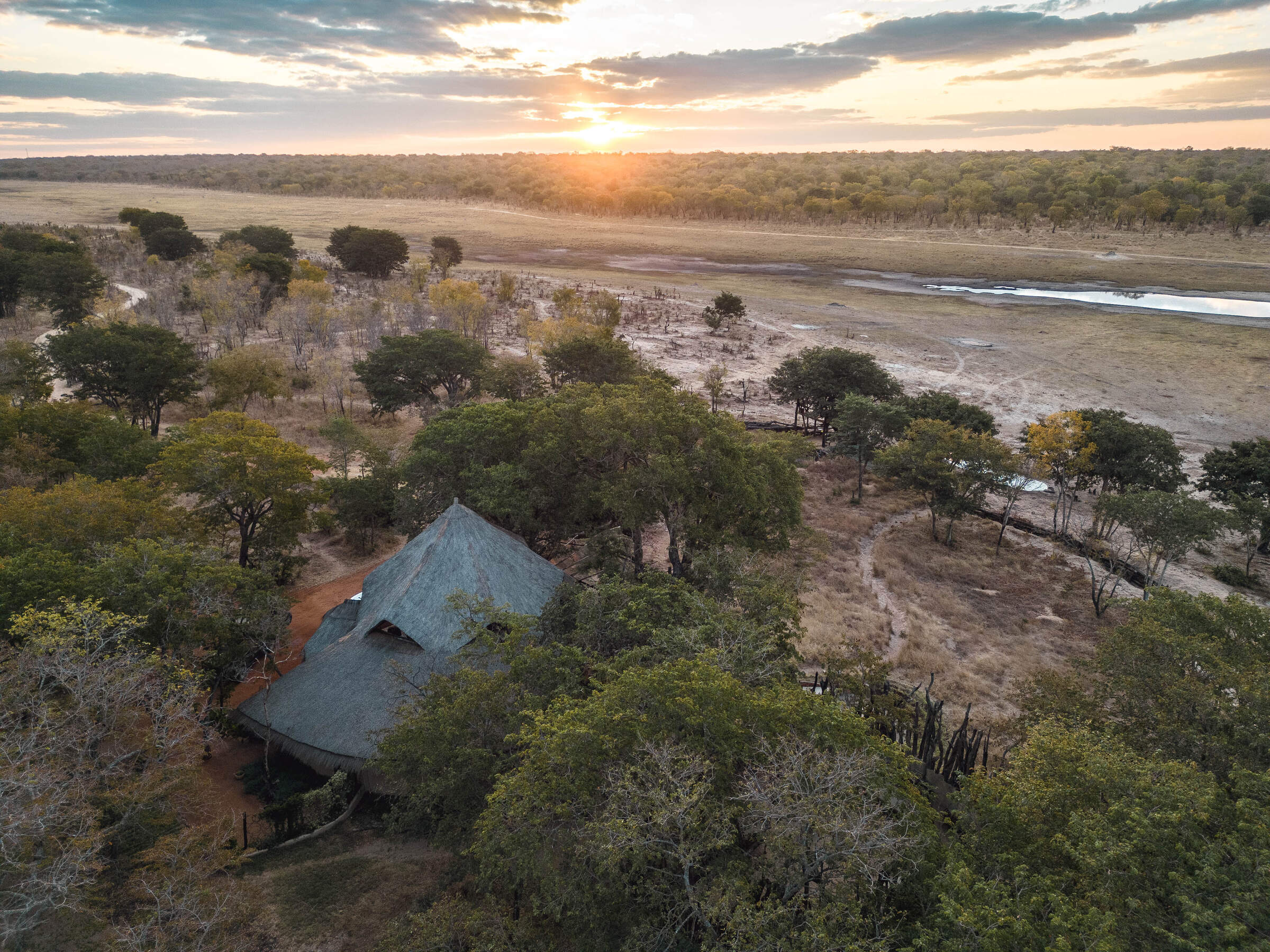
Sable Valley Lodge
Set on the 12km Dete Vlei, the recently upgraded and family-friendly Sable Valley sits in a private reserve within easy reach of Hwange National Park.
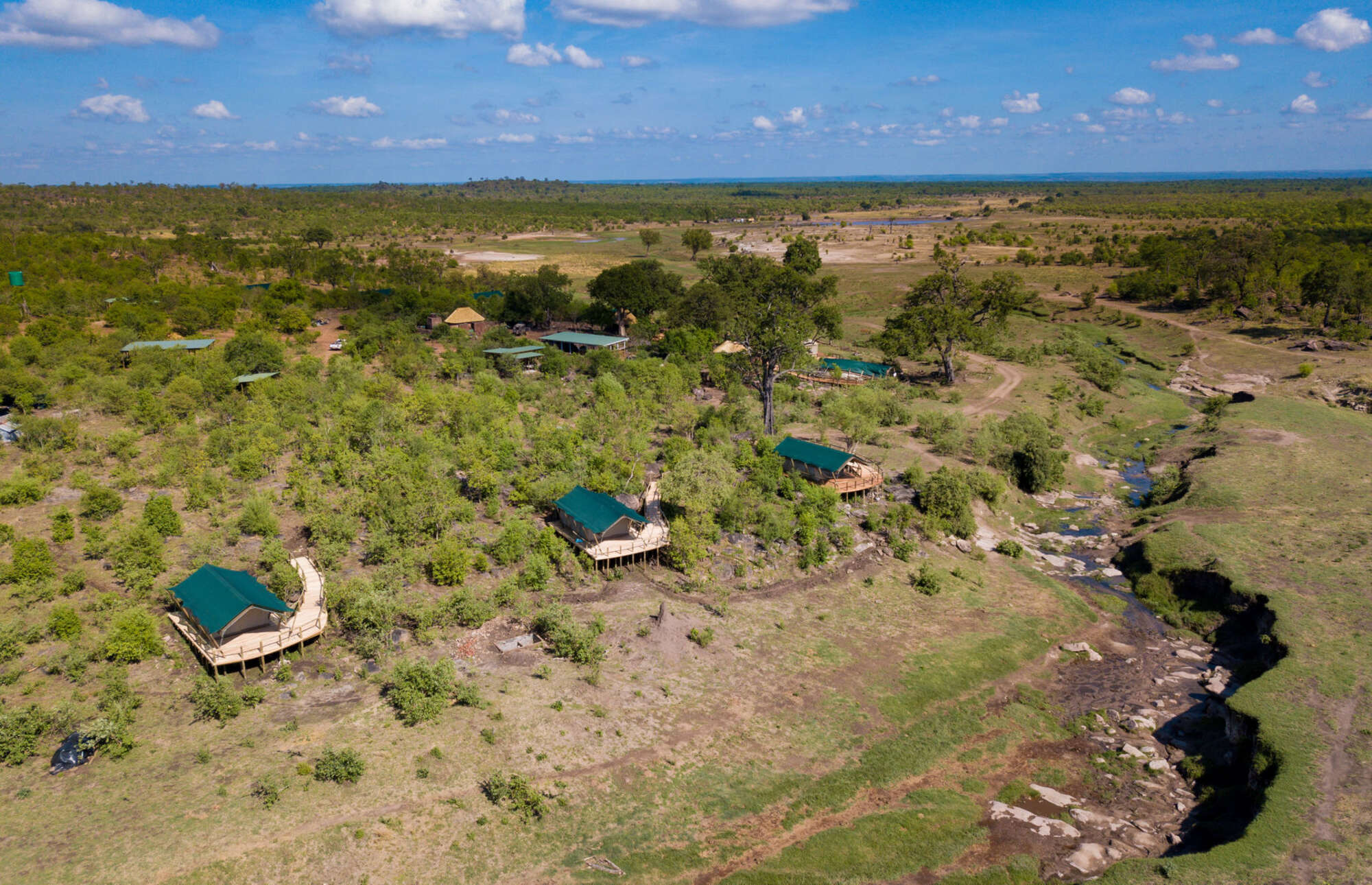
Deteema Springs Camp
Nestled deep in Hwange National Parks rugged northern sector, Deteema Springs Camp promises visitors an authentic bush camp experience.
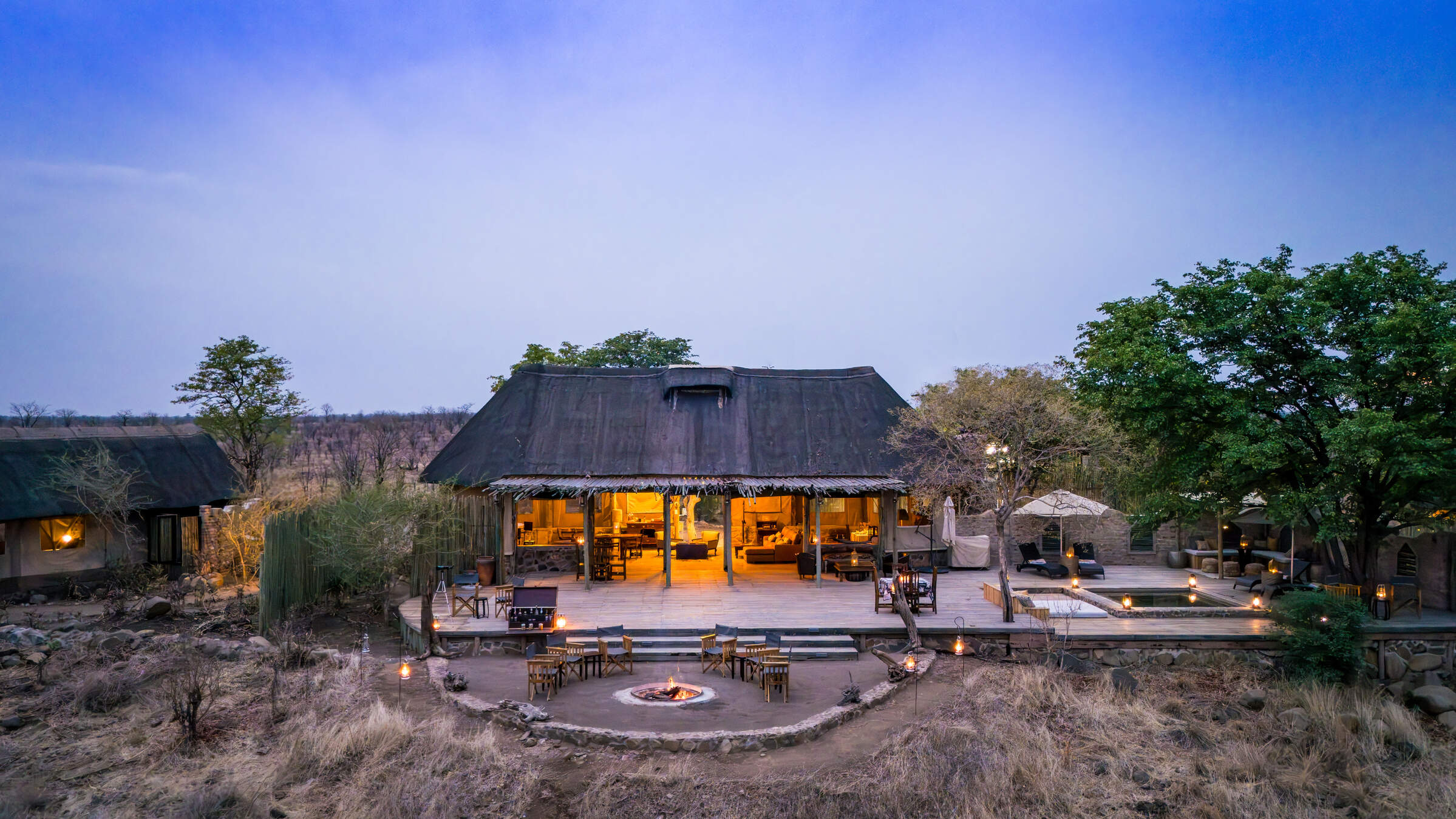
Daka Camp
One of the most remote camps in Hwange National Park, Daka Camp, like the smaller Daka Expeditions, sits almost on the border with Botswana.
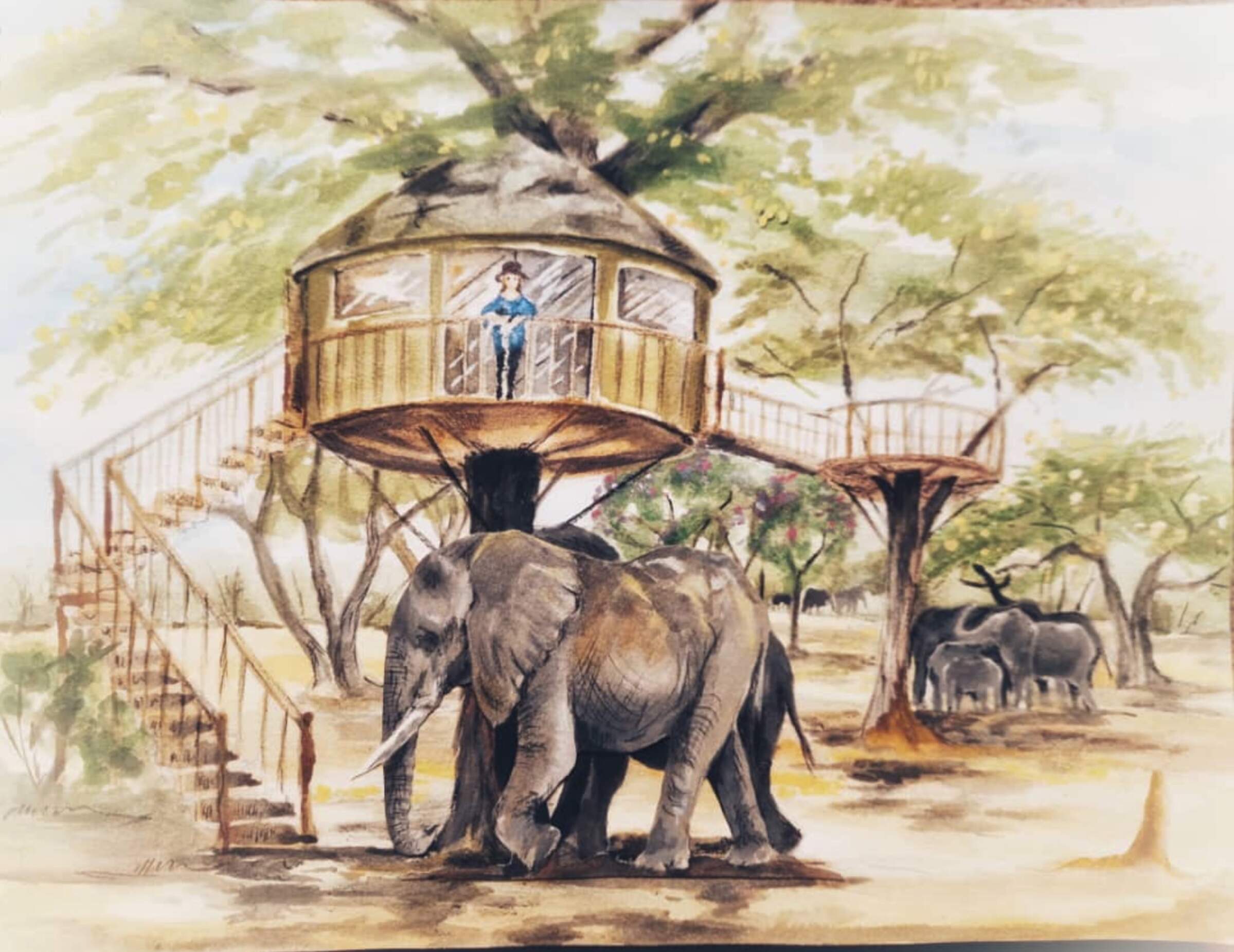
Tum Tum
The Tum Tum Treehouses are due to open in late 2025. Details on this exciting development are still scarce, so watch this space.
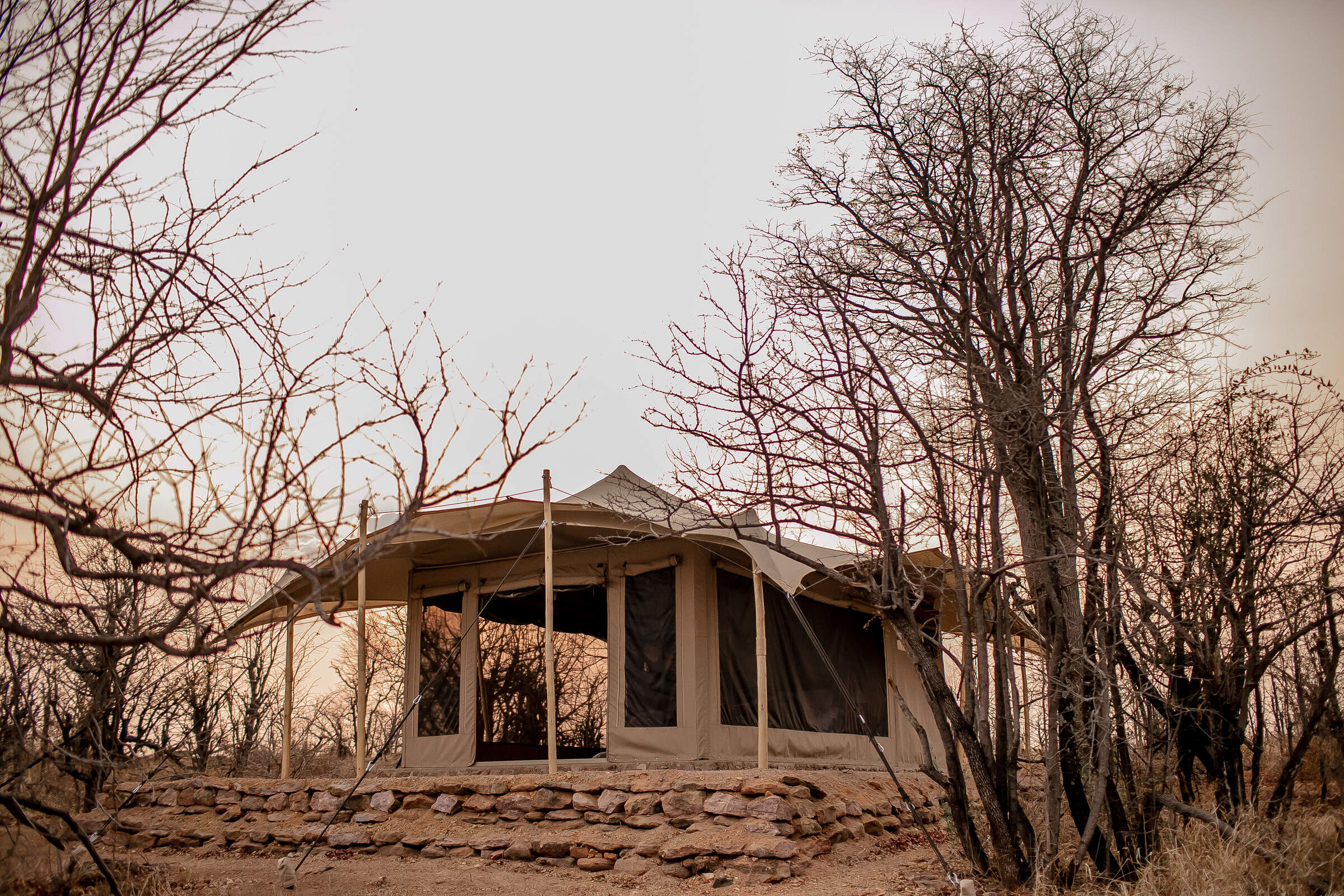
Camp Chitubu
Nestled in the rugged north of Hwange National Park, the unpretentious yet comfortable Camp Chitubu has a strong focus on excellent guiding.
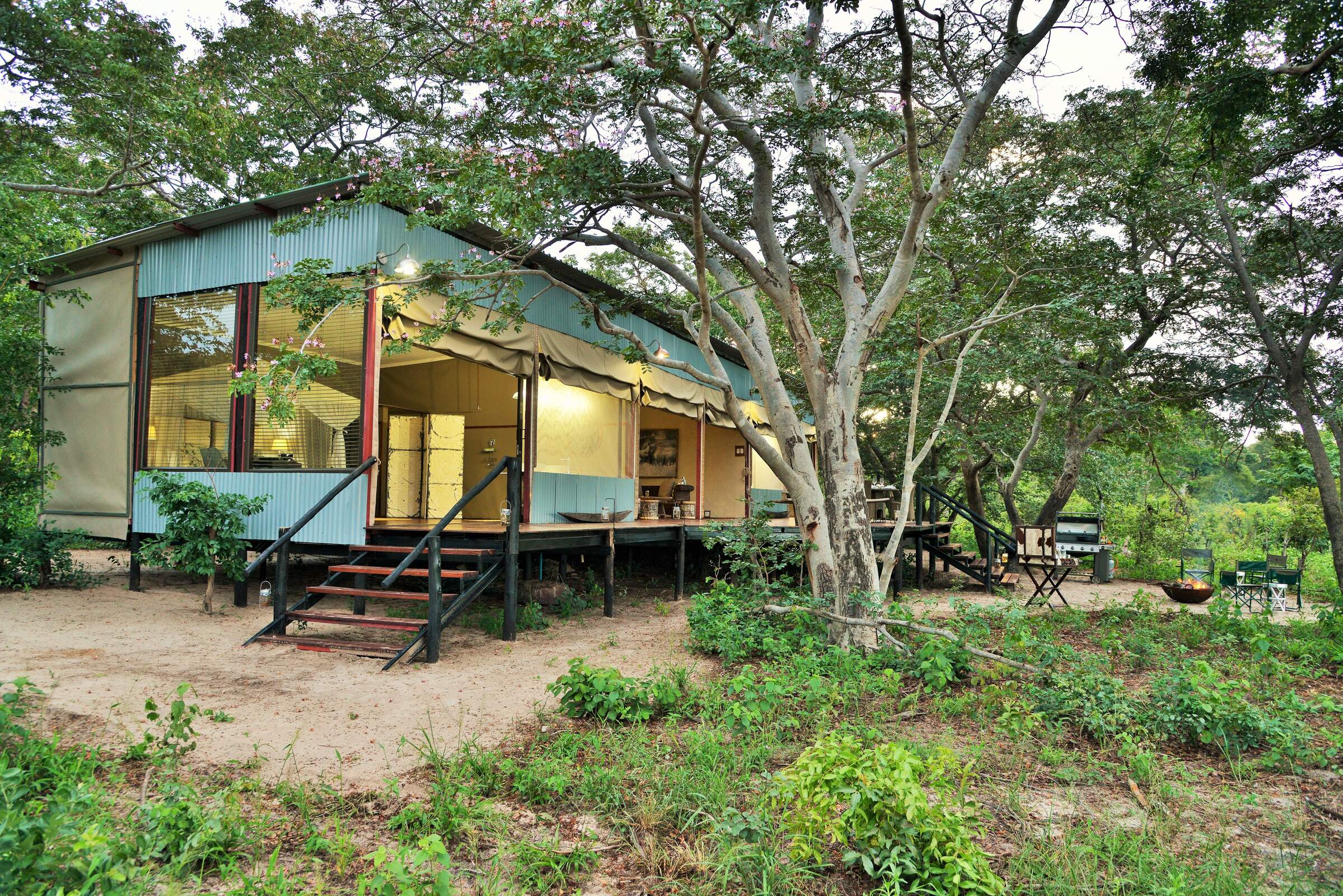
Khulu's Retreat
Just outside Hwange National Park, Khulu's Retreat is an exclusive private villa and is a great place to spoil yourself on a safari in Zimbabwe.
When to go to Hwange National Park
Our month by month guide: What it's like to visit Bomani Tented Lodge in Hwange National Park
Jan
Feb
Mar
Apr
May
Jun
Jul
Aug
Sep
Oct
Nov
Dec
Zimbabwe in January
January falls in the middle of Zimbabwe’s rainy season and is the wettest month of the year. Heavy rainfall occurs most days, flooding seasonal rivers and waterholes, with the occasional sunny spell.
With the high levels of precipitation the wildlife in the national parks becomes widely dispersed, taking advantage of the abundance of food and water, and is easily hidden by the thick, green bush.
While sightings of larger animals are possible, and many species drop their young at this time, game viewing is often sparse. However, many migratory species of bird arrive in Zimbabwe making it a peak month for birding.
The rains create incredibly sticky mud in Mana Pools National Park, preventing access and causing camps to close for the season. The majority of the camps in other parks remain open, with low rates attracting a smattering of visitors.
- Peak of the rainy season: hot & humid with heavy rain most days
- Bush exceptionally thick and green, with poor game viewing
- Species such as impala drop their young
- All camps in Mana Pools closed
- Very few visitors, and low rates at open camps
Our view
A time to avoid if possible
Weather in January
Zimbabwe in February
February remains well within Zimbabwe’s rainy season. Although total rainfall drops, relatively short thunderstorms can still be expected most afternoons. On the plus side, there is a greater chance of some sunshine in-between.
Much of the country remains waterlogged, closing access to Mana Pools and severely restricting walking safaris in other parks. While game drives and canoeing remain an option, the abundance of water disperses animals, and thick grass can make it difficult to spot larger species, but birding remains excellent. Conversely, this is a great time of year to view the landscape, and is excellent for photographers. Sporadic cloud cover and clear air can make for some spectacular sunsets too, particularly over Lake Kariba and the Zambezi River where the reflections off the water add to the beauty.
- Generally wet with frequent thunderstorms & hot humid days
- Poor wildlife viewing due to dispersed animals & thick bush
- Clear air, green landscapes & exceptional sunsets
- All camps in Mana Pools closed
- Very few visitors & low rates at camps that are open
Our view
This is not a great time to visit
Weather in February
Zimbabwe in March
March is the final month of Zimbabwe’s rainy season, when the rains start to trail off and sunny days become the norm. However, some days the clouds can still build, breaking into thunderstorms in the afternoon.
Mana Pools remains closed throughout the month but the majority of camps in Hwange, Matusadona and Gonarezhou remain open. Here, the landscape is green and alive, with migrant species of birds taking advantage of the abundant insect life. Larger animals remain elusive though, and walking safaris remain restricted.
By this time of year, the rains have normally trickled down to the Zambezi River and the flow of water over the Victoria Falls starts to increase, but without kicking up too much spray to obscure the views.
- Last month of the rainy season: hot, humid days with occasional storms
- Lush vegetation means good birding, but poor game viewing
- Views of the Victoria Falls improve
- All camps in Mana Pools closed
- Open camps have few visitors & low rates
Our view
This is not a great time to visit
Weather in March
Zimbabwe in April
April marks the end of Zimbabwe’s rainy season and the end of summer. Clear skies are the norm, with just the occasional shower. Temperatures start to drop, failing to reach 30ºC most days and dropping down to around 10ºC at night.
As the rain fades the landscape starts to dry out. While the vegetation remains thick and green, the soil in Mana Pools dries enough for camps to open, and the only camps to remain closed are the most remote bushcamps in Hwange. Although viewing of larger animals remains tricky, the improved weather starts to draw back visitors, as do prices significantly below those in the peak season.
The Zambezi River and flow of water over the Victoria Falls is at its highest, although large amounts of spray diminish views of the waterfall itself.
- Transitional period, with much lower rainfall & falling temperatures
- Wildlife is still dispersed & hard to see, but sightings improving
- Views of the Victoria Falls often obscured by spray
- Camps in Mana Pools open
- Visitors start to return & camps increase their rates
Our view
A good time to visit, with pros & cons
Weather in April
Zimbabwe in May
The first month in the dry season, May is also Zimbabwe’s first month of winter. If the rains are particularly late in a given year, you may catch the odd shower, but you can expect clear and sunny days the majority of the time. While it’s warm in the daytime, temperatures drop to single digits at night, so bring a warm jumper and gloves for early morning drives.
With the rain having cleared the air, the sky is bright blue, and it’s the best time of year for photography.
Even the most remote camps in Zimbabwe are now open. With the lack of rainfall, vegetation dies back significantly, and seasonal rivers return to sand. Not only does this open up the possibility of walking safaris, but wildlife viewing becomes much more reliable.
- Start of the dry season, with milder days and cold nights
- Game viewing significantly improves as vegetation dies back
- Vegetation starts to turn from green to brown
- Best time for photography with crystal clear air
- Visitors start to return; all camps open & rates increasing
Our view
A very good time to visit
Weather in May
Zimbabwe in June
During June you can virtually be guaranteed of dry and sunny days, although temperatures continue to drop, and can get close to freezing at night in Hwange National Park. Jumpers, jackets and gloves are strongly recommended for early mornings and evenings.
The opportunities for wildlife viewing improve throughout the month as the landscape rapidly dries, and the animals start to gather on the banks of the Zambezi River and around Hwange’s waterholes.
Water levels in the Zambezi River start to drop, reducing the amount of spray kicked up at the Victoria Falls and greatly improving visibility, but still allowing a full curtain of water to cascade over the edge.
- Middle of winter, with night-time temperatures close to freezing
- Game viewing significantly improves throughout the month
- Views of the Victoria Falls are at their best
- Noticeable increase in visitor numbers
- Camps considerably more expensive
Our view
A very good time to visit
Weather in June
Zimbabwe in July
July sits in the middle of Zimbabwe’s dry season. Although it’s warm at midday, temperatures are generally cold and in Hwange it’s been known to drop below freezing at night, with the lower-altitude Mana Pools feeling a bit warmer.
With wildlife clustering around the few remaining waterholes, sparse vegetation, and some of the best views of the Victoria Falls, this is one of the most popular times to travel, with camps charging peak season rates to reflect this. That said, visitor numbers to the country in general remain low, and outside of the Victoria Falls it’s rare for any areas to feel crowded.
- Middle of the dry season with almost no chance of rain
- Clear sunny days, but very cold nights
- Wildlife viewing good; game drives and walking safaris unrestricted
- Views of the Victoria Falls at their best
- Camps charging peak season rates
Our view
A very good time to visit
Weather in July
Zimbabwe in August
While August is the end of winter and temperatures are starting to creep up, mornings and nights are still cold, and game drives in open vehicles can feel particularly chilly. Well into the dry season, the landscapes will have mostly transformed from green to brown and wildlife viewing in Zimbabwe’s national parks is approaching its best. Due to dust kicked up into the atmosphere and smoke from bush fires you may start to notice a haze on the horizon, but this doesn’t significantly impact photography.
August is one of the most expensive months, and the pleasant weather and decent game viewing attracts lots of visitors. While the national parks rarely feel crowded, Victoria Falls accommodation can sell out a year in advance.
- Warm, sunny days but cold mornings & nights; almost no chance of rain
- Wildlife viewing nearly at its best
- Landscape turns brown, & an atmospheric haze develops
- All camps charging peak season rates
Our view
Fantastic: the very best time to visit
Weather in August
Zimbabwe in September
Temperatures in September rarely drop below 15ºC, but are yet to reach the oppressive highs of summer. It will normally have been five months since the last drop of rain, so antelope and elephants cluster around whatever water remains, with predators never too far away.
The landscape is very brown, and the haze building on the horizon takes some of the colour out of the sky, so while animal subjects are plentiful, the background is not ideal for photography.
The combination of incredible wildlife viewing, hot and sunny weather, and cheaper flights outside of the school holidays make this the most popular time of year to travel, and availability at the camps can become limited up to a year in advance.
- The best month for weather, with a pleasantly warm temperature range
- One of the best months for game viewing
- Victoria Falls starting to dry but still impressive on Zimbabwean side
- All camps are charging peak season rates
- Most popular time to travel, & space can be limited
Our view
Fantastic: the very best time to visit
Weather in September
Zimbabwe in October
October is the last month of the dry season with little chance of rain but building humidity. While the higher elevation of Hwange National Park limits temperatures to the 30s Celsius, they can easily top 40ºC in Mana Pools.
With little vegetation or water, wildlife is drawn to the few remaining water sources and viewing is at its best; visitors who brave the heat can be rewarded with some exceptional sightings, although haze in the air diminishes photos. Maximum visibility and dense wildlife concentrations can also make for very rewarding walking safaris, although the heat can make them uncomfortable.
Water levels in the Zambezi at the Victoria Falls drop significantly, and large stretches of the waterfall are a dry cliff-face – although it never dries completely. Camp rates remain at their peak, but visitor numbers drop as people avoid the heat.
- Last month of the dry season; very hot with building humidity
- Wildlife viewing at its very best
- Dust & smoke in the air diminish photographic opportunities
- Victoria Falls starting to look very dry
- Camp rates remain at their peak
Our view
A very good time to visit
Weather in October
Zimbabwe in November
November is a transitionary period, with high temperatures and humidity. While they can’t be predicted with any precision, the first rains normally arrive halfway through the month, in the form of thunderstorms lasting a few hours each day.
Early November is a popular time to travel as the camps drop their rates, so if you’re lucky you can get peak-season game viewing at low-season rates. This is a gamble though as if the rains do arrive, animals are no longer limited to a few dangerous waterholes and will disperse into the bush. While all the camps in Mana Pools intend to remain open, the rains can make the airstrips unusable so you may find yourself moved to a different park, a risk that increases through the month.
- Typically the start of the rains in Zimbabwe
- Temperatures & humidity levels remain high
- Wildlife viewing rapidly diminishes as the rains arrive
- Camps remain open, but risk early closure in Mana Pools
- Much cheaper time to travel as camps drop their rates
Our view
A good time to visit, with pros & cons
Weather in November
Zimbabwe in December
By December the rainy season has begun in earnest; this is one of the wettest months in Zimbabwe, with heavy thunderstorms most afternoons and occasionally continuous rain for a couple of days. While temperatures start to cool down the high levels of humidity can make the heat feel more oppressive.
With the rains comes an explosion of green growth, and the dust and smoke are washed out of the air. The resulting scenery – with the occasional bright blue skies – can be fantastic for photographers. Thick vegetation and plentiful water makes viewing of larger animals tricky, but with migratory species arriving the birding is at its best.
All camps in Mana Pools and the remote Hwange camps close, with those remaining open charging their lowest rates.
- One of the wettest months in Zimbabwe
- High temperatures & levels of humidity
- Wildlife viewing poor, but birding good
- Lush green landscapes & clear air; great for landscape photography
- All camps in Mana Pools closed
Our view
This is not a great time to visit
Weather in December

Looking for inspiration on where to travel next?
Visit our trip chooser to explore your options and find inspiration for your perfect African adventure
Inspire me
